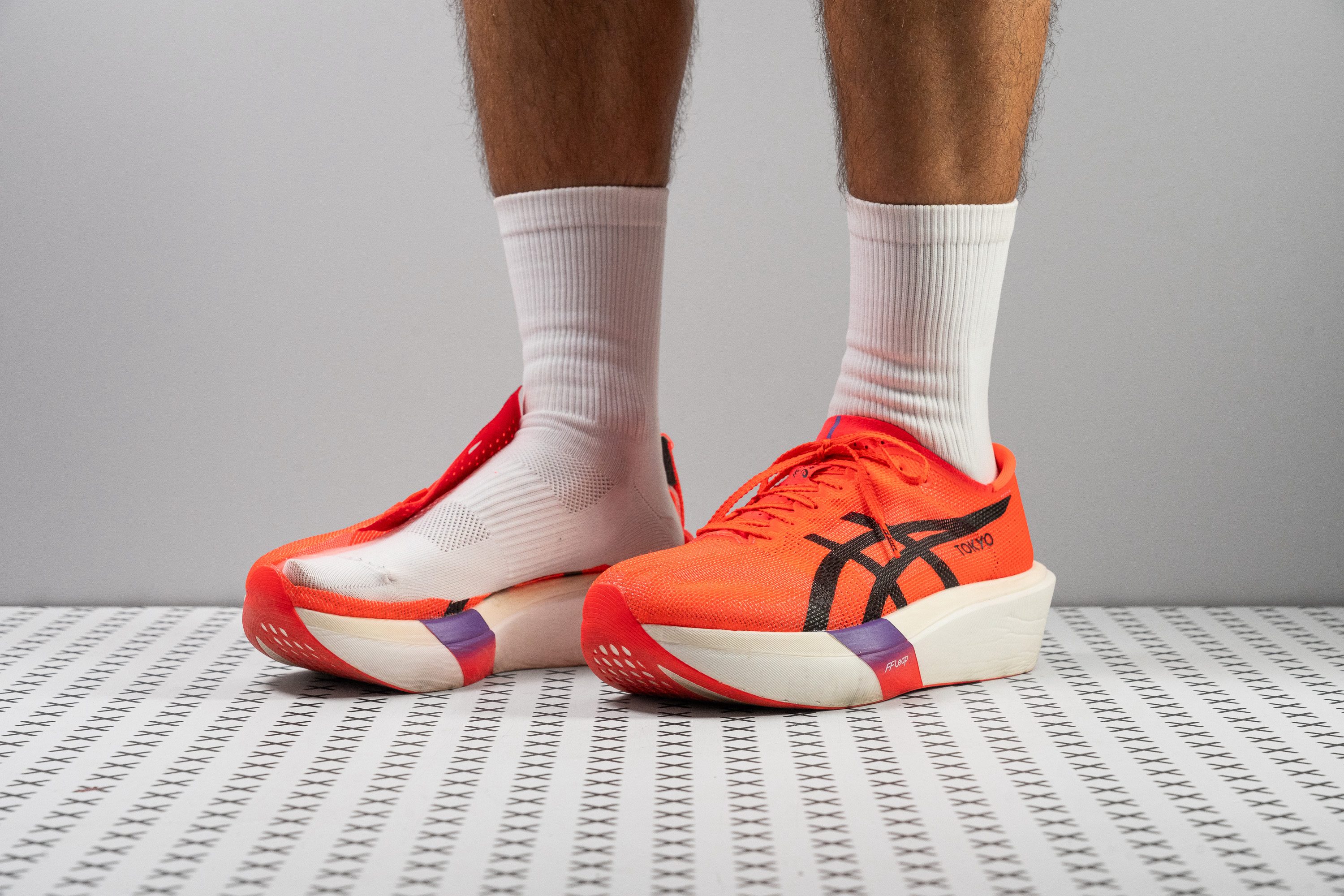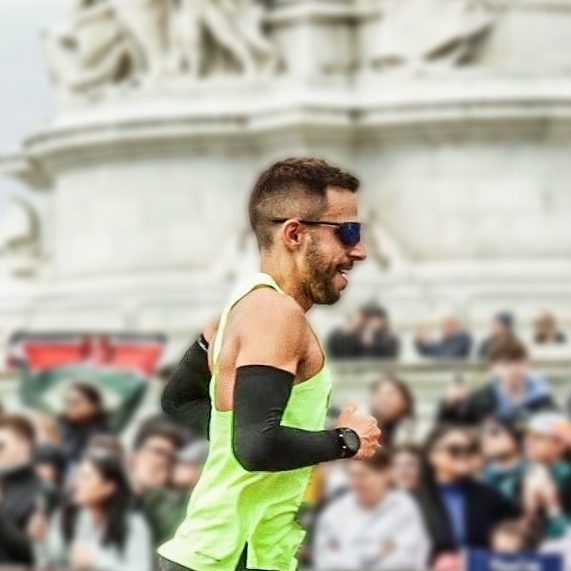Our verdict
- Top pick in best super shoes
Pros
- Light as a feather
- Explosive energy return
- Marathon-ready cushioning
- Fantastic ASICSGRIP outsole
- Generous toebox height
- FF Leap is a true next-level foam
- Secure lockdown
- Excellent breathability
Cons
- Higher price tag
- Narrow toebox
- Unstable for heel strikers
Audience verdict
- Top 1% in road running shoes
- Top 3% in ASICS running shoes
Comparison
The most similar running shoes compared
+ + Add a shoe | |||||
|---|---|---|---|---|---|
| Audience score | 95 Superb! | 90 Superb! | 86 Good! | 88 Great! | |
| Price | £240 | £260 | £280 | £240 | |
| Pace | Competition | Competition | Competition | Competition | |
| Shock absorption | High | High | High | High | |
| Energy return | High | High | High | High | |
| Traction | High | High | High | High | |
| Arch support | Neutral | Neutral | Neutral | Neutral | |
| Weight lab Weight brand | 5.7 oz / 163g 6 oz / 170g | 6.5 oz / 183g 6.4 oz / 181g | 6.9 oz / 197g 7 oz / 199g | 5.6 oz / 159g 6 oz / 170g | |
| Lightweight | ✓ | ✓ | ✓ | ✓ | |
| Drop lab Drop brand | 6.0 mm 5.0 mm | 6.5 mm 5.0 mm | 7.5 mm 8.0 mm | 6.9 mm 5.0 mm | |
| Strike pattern | Mid/forefoot | Mid/forefoot | Mid/forefoot | Mid/forefoot | |
| Size | True to size | Slightly small | Half size small | True to size | |
| Midsole softness | Soft | Balanced | Soft | Soft | |
| Difference in midsole softness in cold | Small | Small | Normal | Small | |
| Toebox durability | Bad | Good | Good | Bad | |
| Heel padding durability | Good | Good | Good | Good | |
| Outsole durability | Decent | Good | Good | Good | |
| Breathability | Breathable | Breathable | Breathable | Breathable | |
| Width / fit | Narrow | Narrow | Medium | Narrow | |
| Toebox width | Narrow | Medium | Medium | Medium | |
| Stiffness | Stiff | Stiff | Stiff | Moderate | |
| Torsional rigidity | Stiff | Stiff | Stiff | Stiff | |
| Heel counter stiffness | Flexible | Flexible | Flexible | Flexible | |
| Plate | Carbon plate | Carbon plate | Carbon plate | Carbon plate | |
| Rocker | ✓ | ✓ | ✓ | ✓ | |
| Heel lab Heel brand | 38.7 mm 39.5 mm | 39.1 mm 39.5 mm | 39.9 mm 39.5 mm | 38.9 mm 39.5 mm | |
| Forefoot lab Forefoot brand | 32.7 mm 34.5 mm | 32.6 mm 34.5 mm | 32.4 mm 31.5 mm | 32.0 mm 34.5 mm | |
| Widths available | NormalWide | NormalWide | Normal | Normal | |
| Orthotic friendly | ✓ | ✓ | ✓ | ✓ | |
| Season | SummerAll seasons | SummerAll seasons | SummerAll seasons | SummerAll seasons | |
| Removable insole | ✓ | ✓ | ✓ | ✓ | |
| Ranking | #1 Top 1% | #74 Top 20% | #185 Top 50% | #140 Top 38% | |
| Popularity | #129 Top 35% | #120 Top 33% | #91 Top 25% | #148 Top 40% |
Who should buy
We pushed the limits of the Metaspeed Sky Tokyo and found it’s ideal for:
- Runners looking for a damn good supershoe. This one is lightweight, fast, and built with a super-grippy outsole.
- Forefoot strikers with low to medium cadence (140-175) aiming to maximise energy return from powerful strides, as the flat plate excels here.
- Midfoot or forefoot strikers wanting a marathon shoe that lets them lock into a pace and hold it until the finish line.
- Fans of the Metaspeed Sky series. Well, this is without question the best version yet.
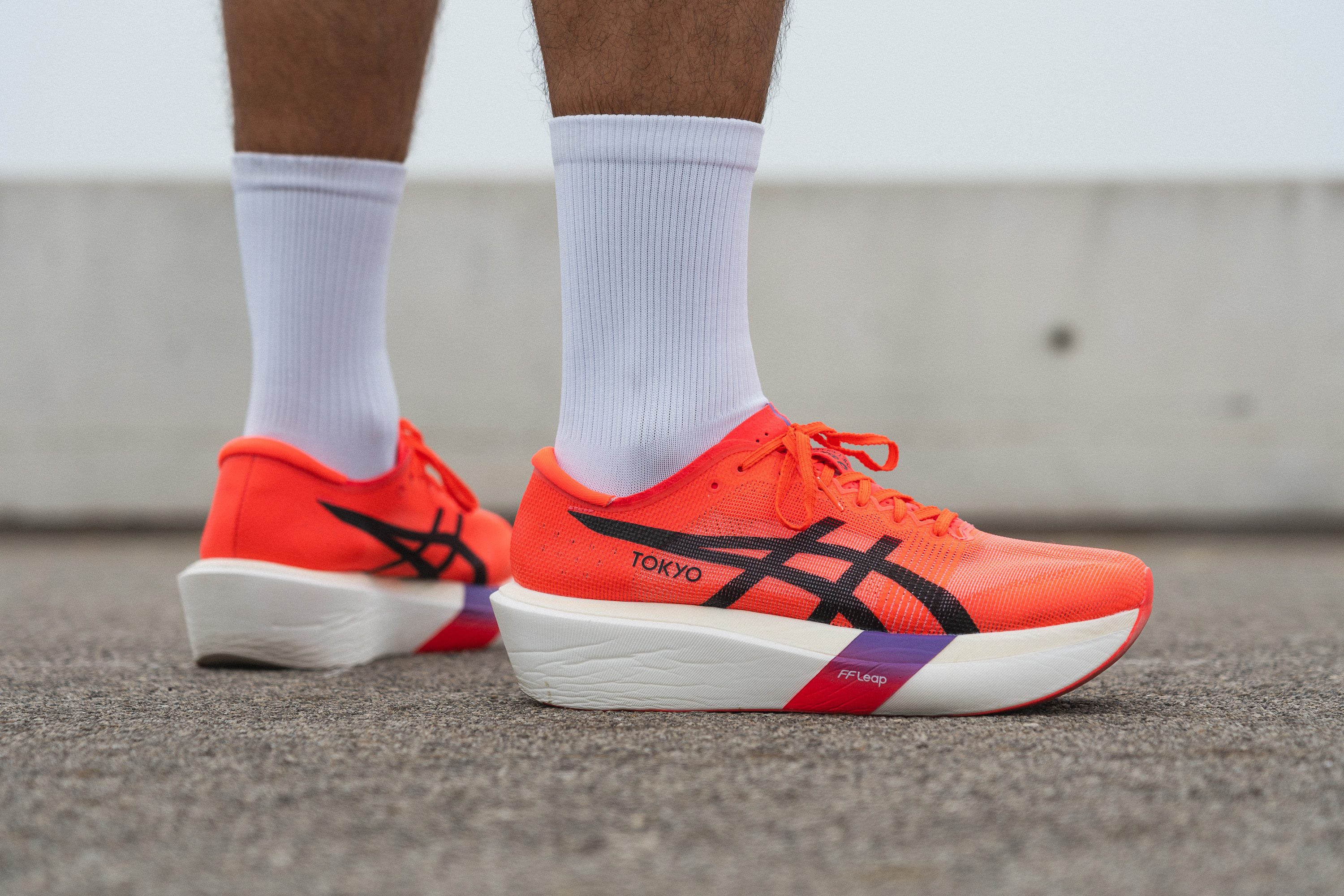
Who should NOT buy
We think the Metaspeed Sky Tokyo sacrifices too much heel stability, and in our view it’s a poor choice for this type of runner. In our testing, the narrow heel platform combined with the soft foam created an unstable ride. For a better option with the same bouncy feel and a more stable platform, we recommend the Adidas Adizero Adios Pro 4 or the Nike Alphafly 3.
We also believe that the narrow toebox can be too restrictive, even for a racing shoe. If that sounds like a concern, we consider that the Saucony Endorphin Pro 4 is a smarter choice—it offers more room up front, better heel support, and... comes at a lower price too.
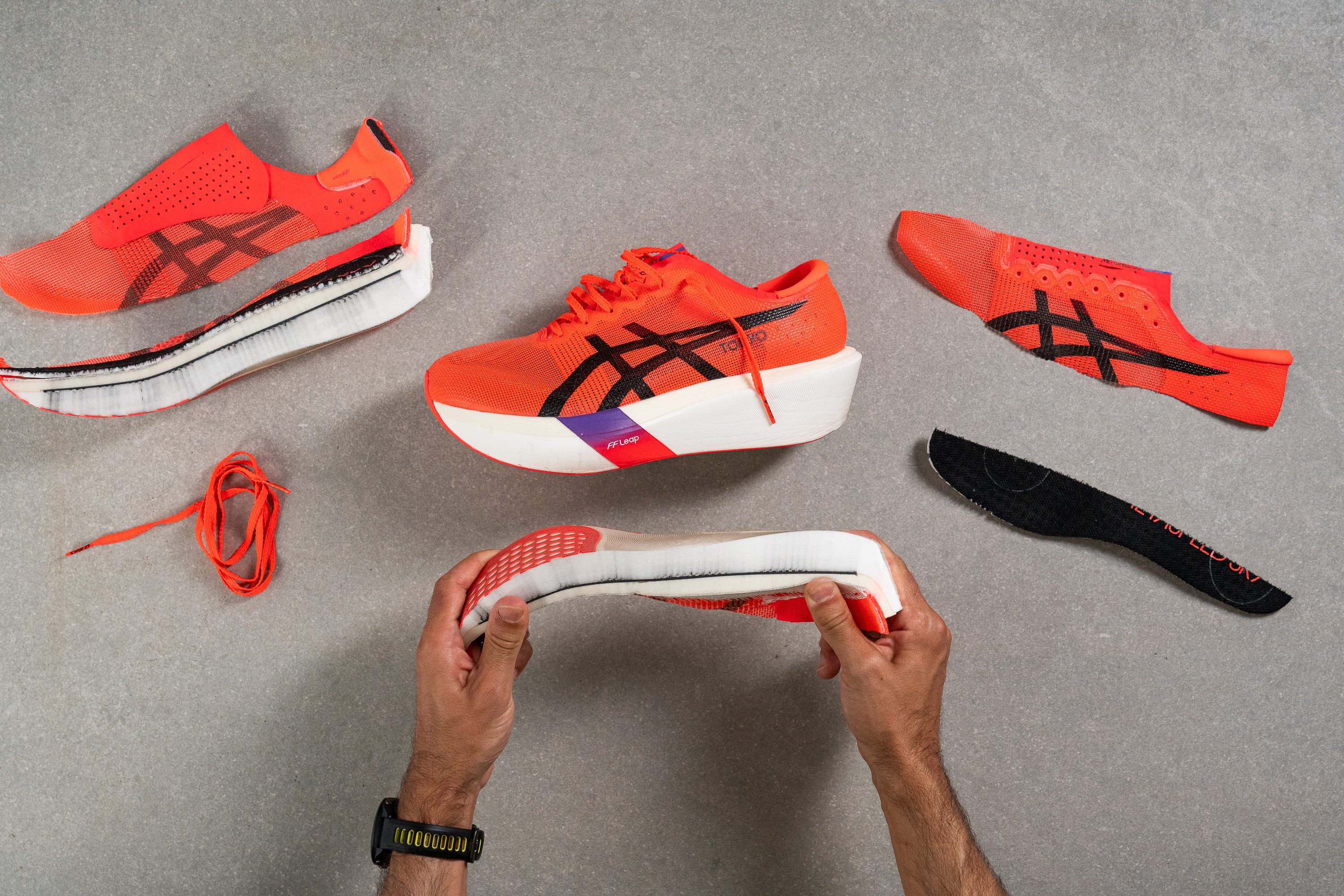
Cushioning
Shock absorption
A supershoe that shines in the marathon distance needs outstanding shock absorption, as this means reduced load on the muscles and extra strength saved for the final stages of such a demanding challenge.
In our ASTM F1976 test, we discovered that the Sky Tokyo delivered an ultra-cushioned 147 SA in the heel and 122 SA in the forefoot, far above the current lab average and higher than many direct competitors. And this is probably as good as it gets while staying below the World Athletics threshold in terms of stack height at least with the current foam technology.
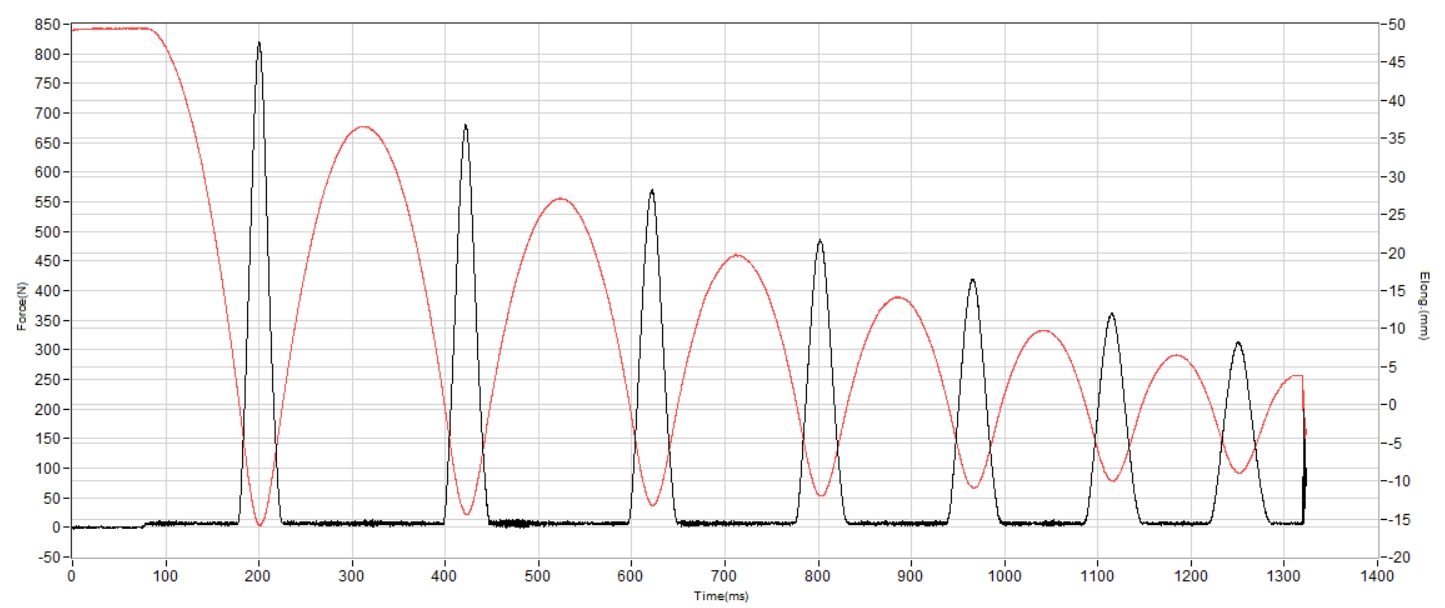
| Metaspeed Sky Tokyo | 147 SA |
| Average | 129 SA |
Energy return
We really liked the Metaspeed Sky Paris, but its energy return felt a little below its main rivals in the supershoe category. It wasn’t bad, yet it never reached the elite-level feel delivered by the rest of the shoe.
Luckily, the Metaspeed Sky Tokyo fully corrects that. We discovered in our lab that it now achieves 78.5% energy return in the heel and 78.2% in the forefoot—a huge improvement over 73.2% and 70.7% before. Energy return now stands on par with the best in the game, creating a true trampoline-like, power-charged ride.
| Metaspeed Sky Tokyo | 78.5% |
| Average | 58.5% |
Heel stack
With the exception of models built for 5K or 10K races like the Nike Streakfly 2, most supershoes aim to push the legal stack height allowed by World Athletics.
When we tested the Metaspeed Sky Tokyo, we discovered a sky-high 38.7 mm in the heel, leaving only 1.3 mm on the table.
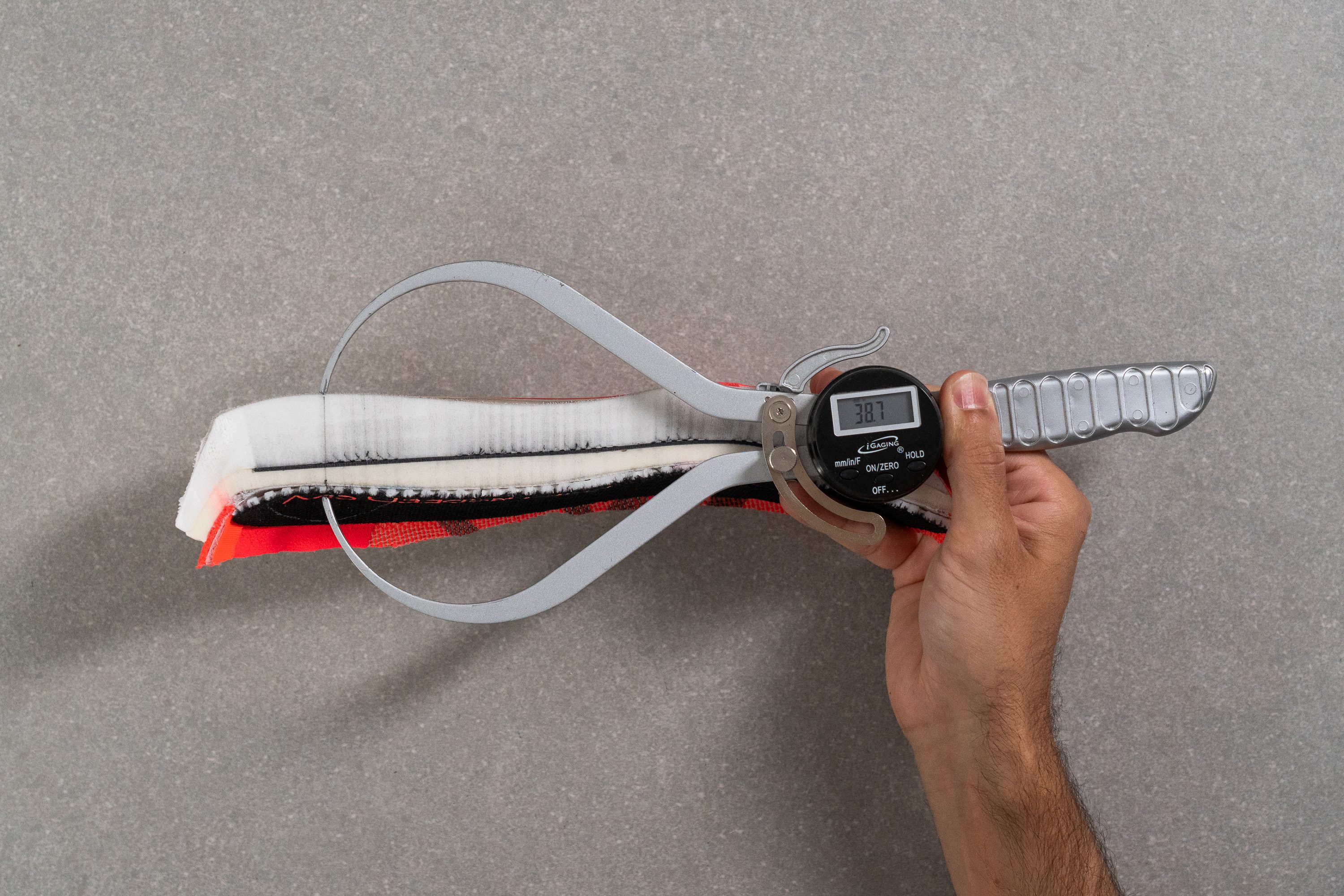
| Metaspeed Sky Tokyo | 38.7 mm |
| Average | 34.8 mm |
Forefoot stack
Since the launch of the previous Metaspeed generation, it’s been clear to us that ASICS aims to position this line for midfoot and forefoot strikers. With 32.7 mm of forefoot stack, we confirmed it delivers more foam than many rivals that stay below 30 mm.
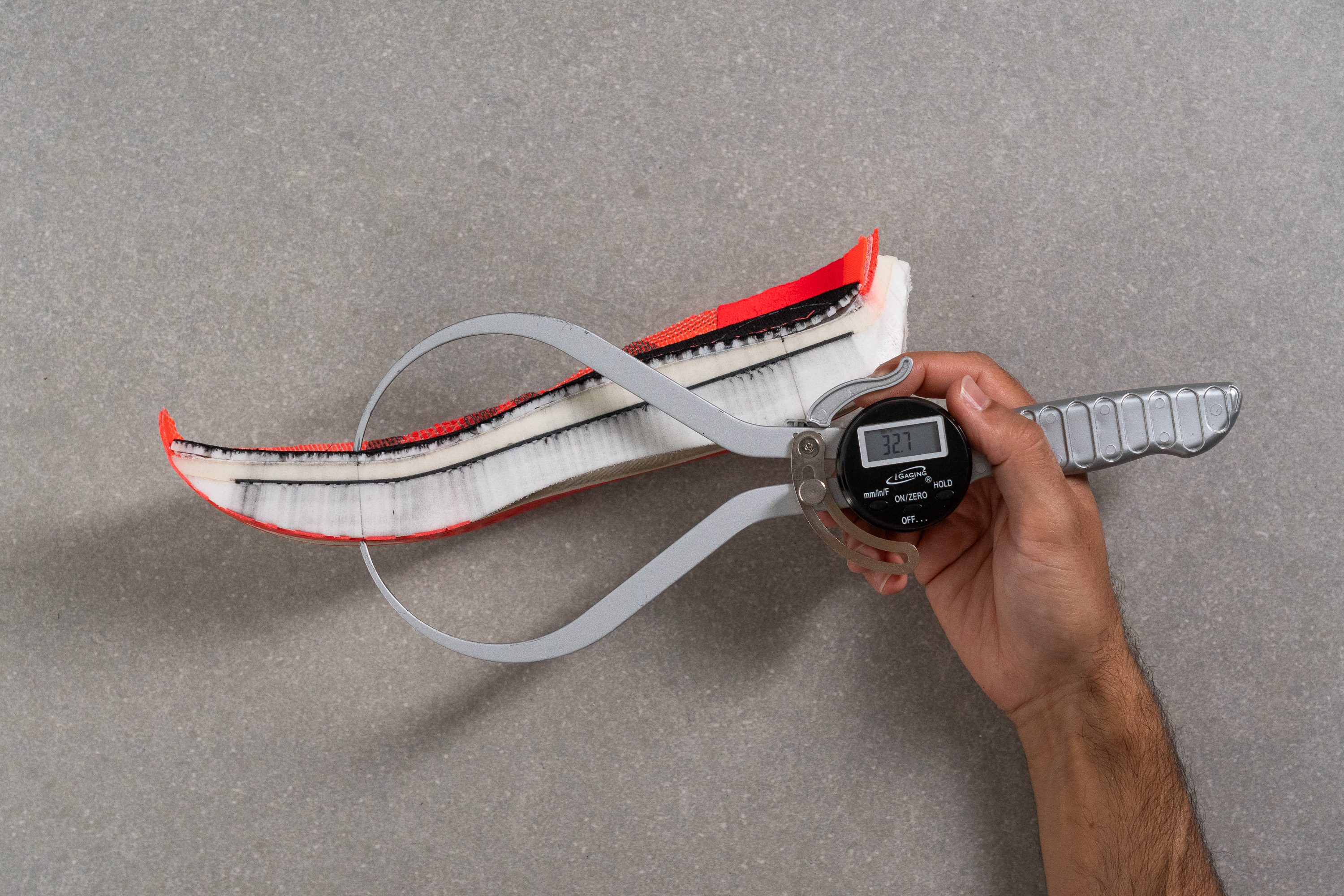
| Metaspeed Sky Tokyo | 32.7 mm |
| Average | 26.2 mm |
Drop
The difference between the previous two measurements gives a medium drop of 6.0 mm. That’s only 1.0 mm higher than ASICS’ stated 5.0 mm.
In fact, the ride feels closer to sub-5.0 mm because of the plate’s geometry and the notably high forefoot stack compared to other supershoes.
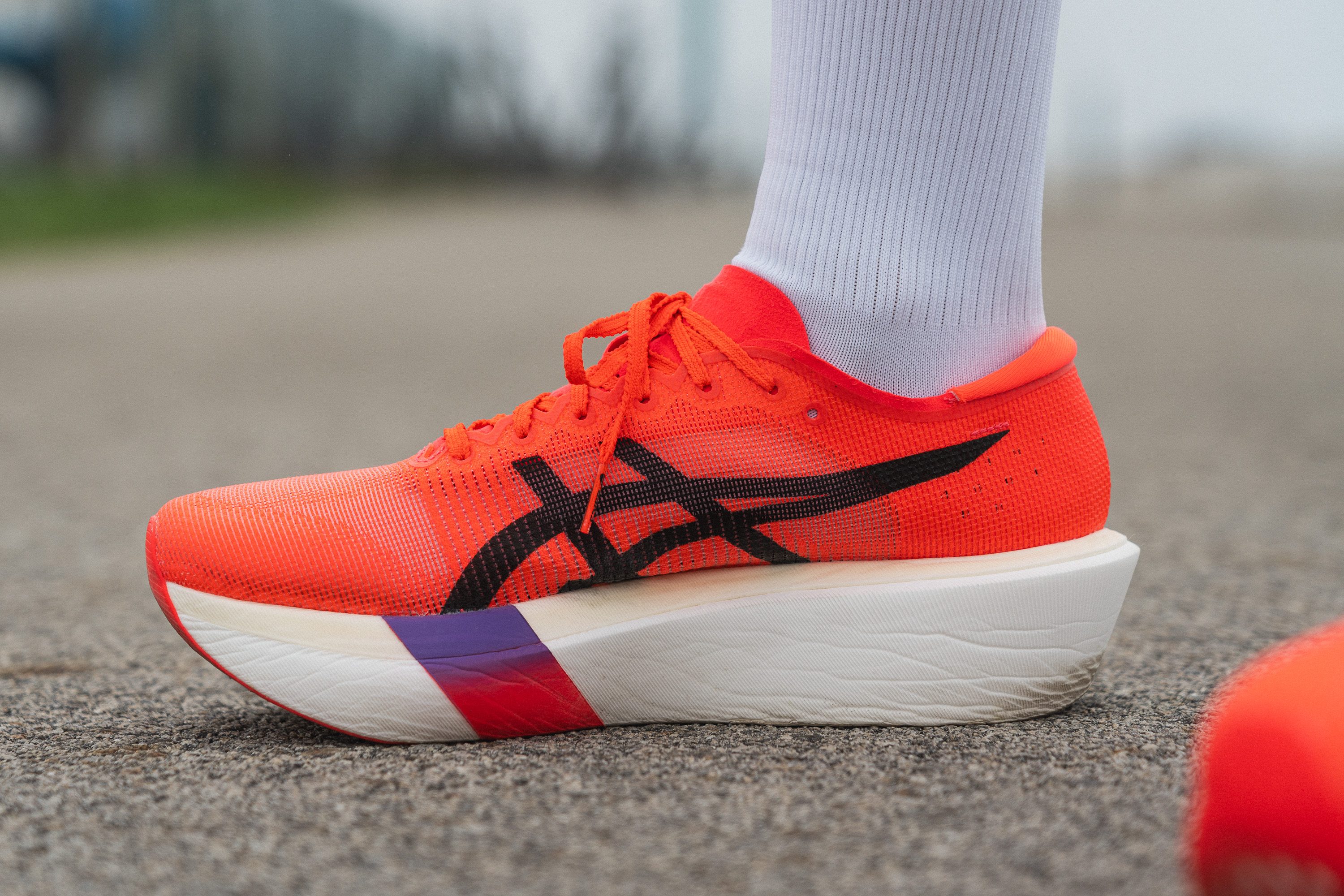
| Metaspeed Sky Tokyo | 6.0 mm |
| Average | 8.6 mm |
Midsole softness
The main reason for the notable price increase in the Metaspeed Sky Tokyo compared to the Metaspeed Sky Paris is its new dual-foam setup featuring the all-new FF Leap compound. This foam is extremely bouncy and also ultra-soft at 11.5 HA.
By the way, FF Leap is not a PEBA foam like FF Turbo+, as it’s made from A-TPU. This is essentially the same material used by brands like PUMA and Adidas to rival PEBA foam, offering slightly greater resilience and maintaining performance longer, both within a single race and across the shoe’s total mileage.
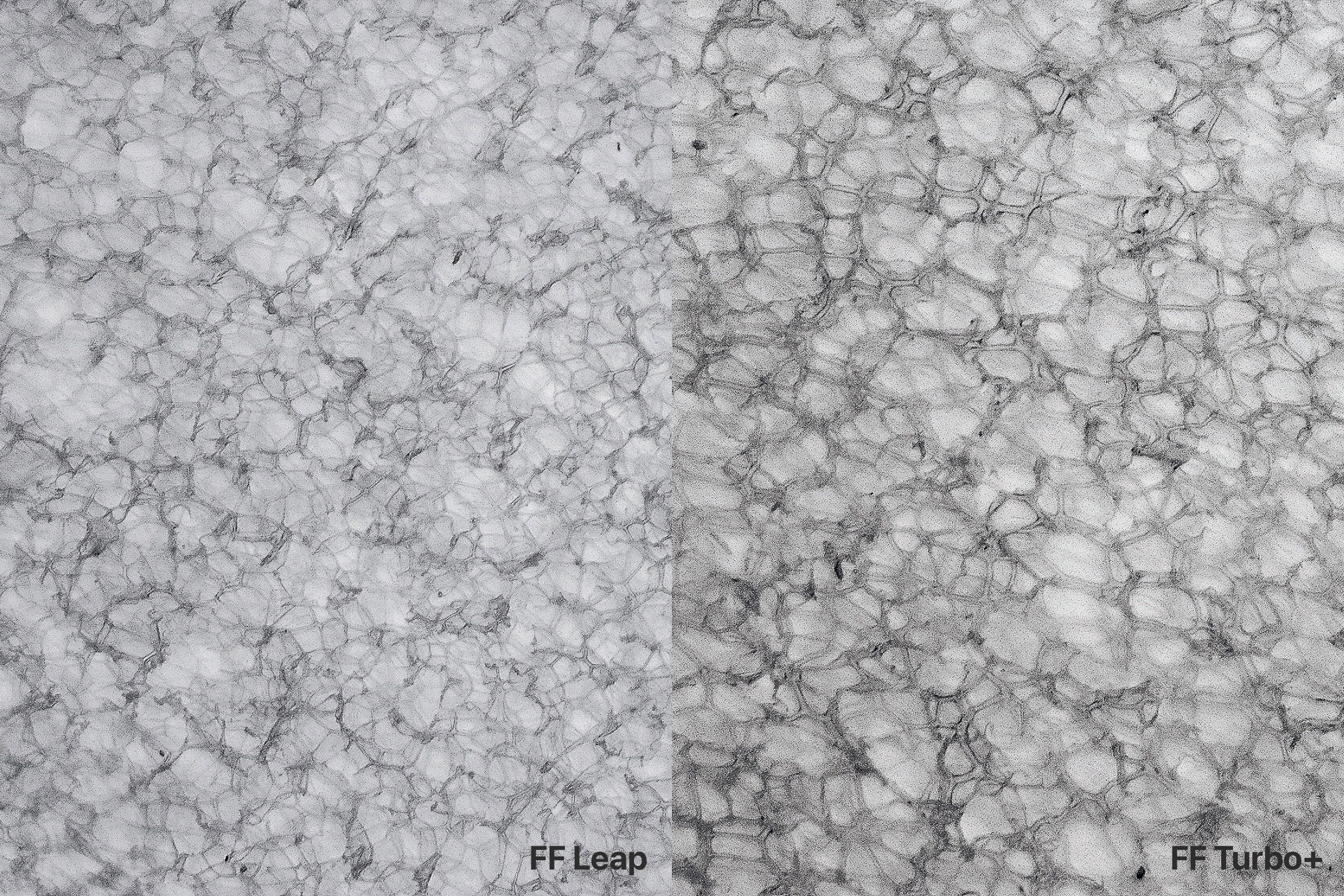
And of course, we cut a small slab of FF Leap and put it under the microscope to compare against FF Turbo+. As you can observe, FF Leap on the left shows a finer, more tightly-packed cell structure that evidences a lighter and softer feel. FF Turbo+ on the right displays larger, more defined cells, pointing toward a denser foam composition.
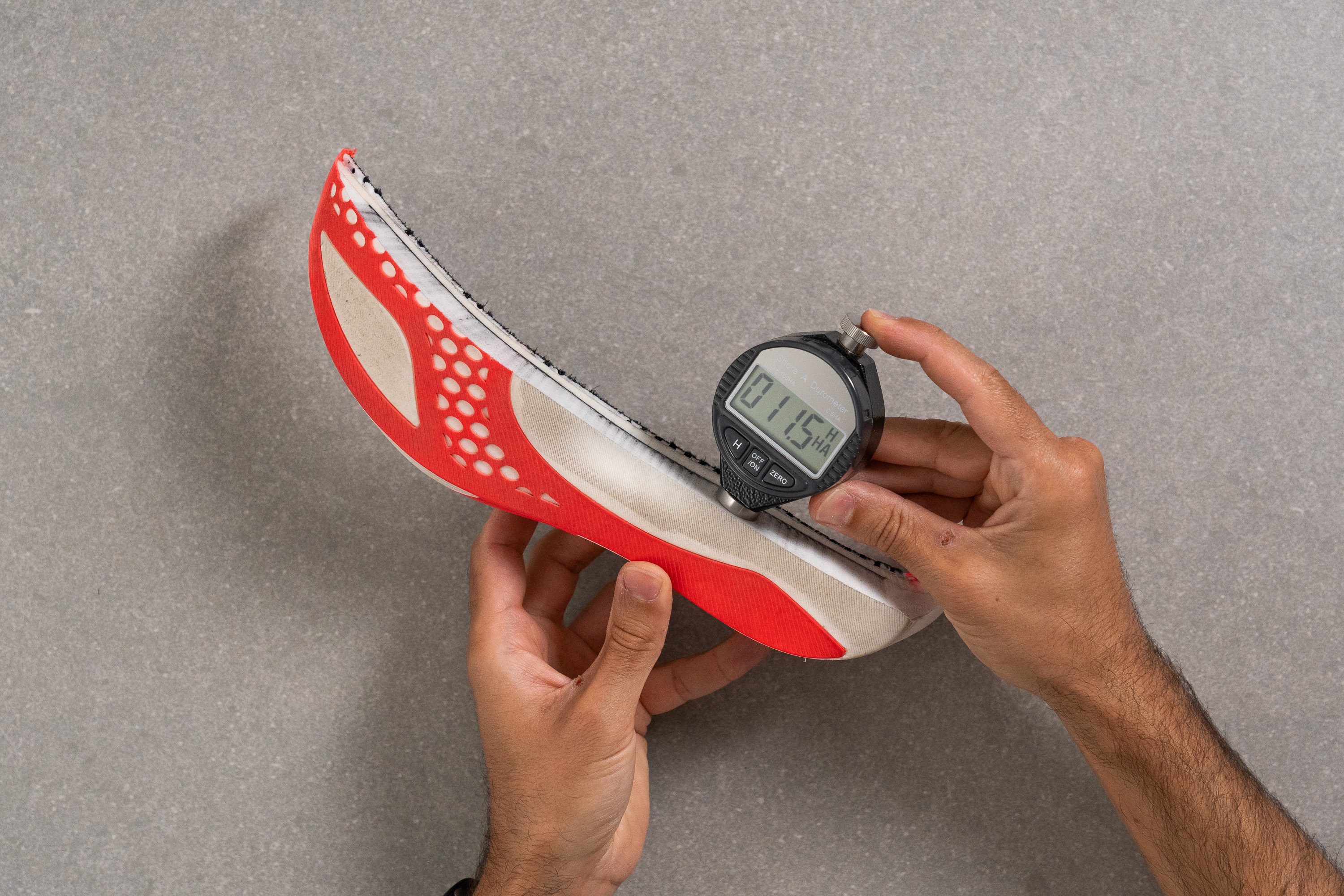
| Metaspeed Sky Tokyo | 11.5 HA |
| Average | 20.4 HA |
Secondary foam softness
The Metaspeed Sky Tokyo uses (for the first time in this series) a dual-foam setup. It's quite similar to the Metaspeed Edge Tokyo, but placement differs here. In the Sky, FF Leap sits beneath the plate, while in the Edge it goes above—mainly due to the plate’s spoon-shaped design, which prioritises maximum FF Leap in the forefoot.
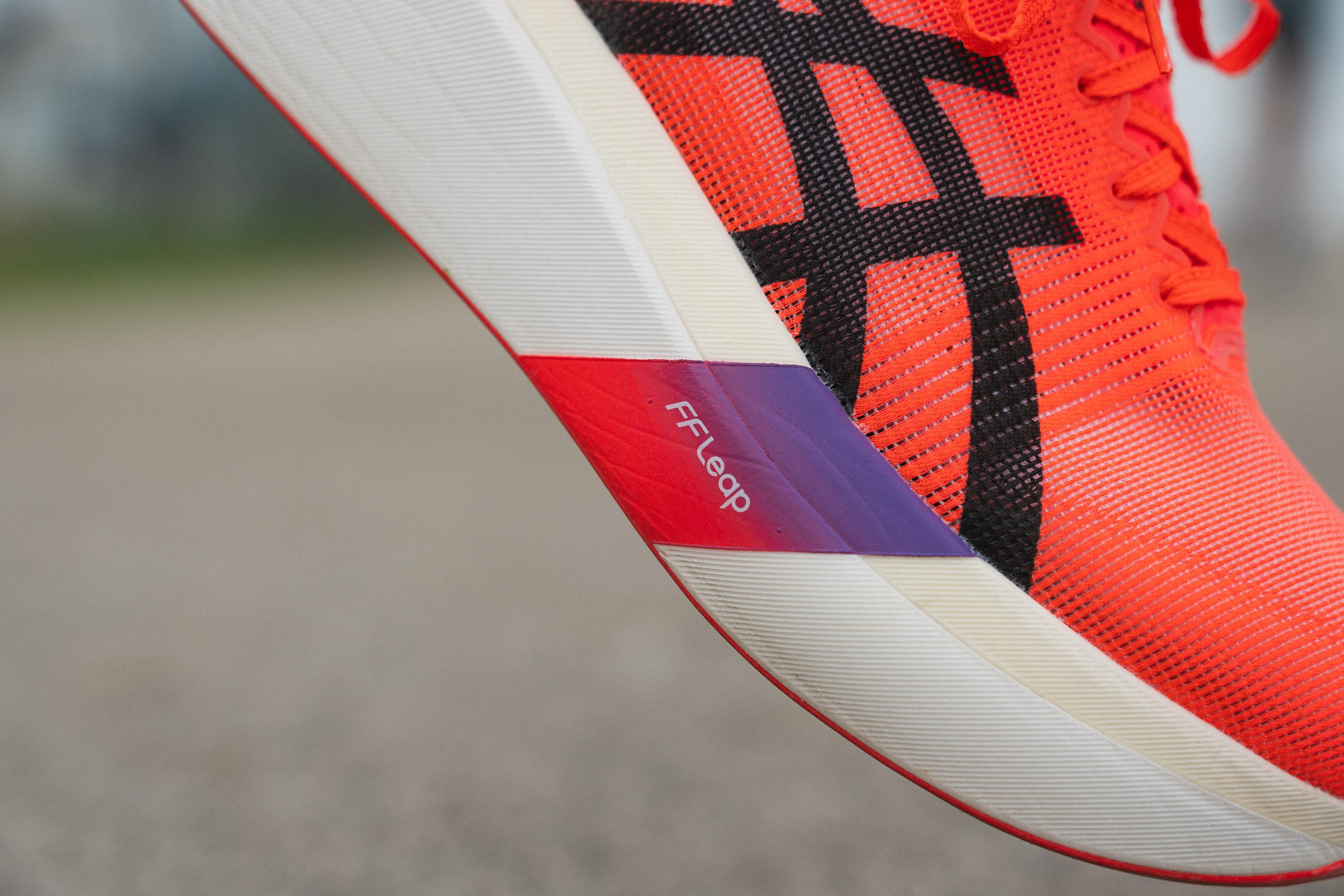
FF Leap (white), FF Turbo+ (beige)
In the Sky, FF Turbo+ (19.5 HA) is positioned closer to the foot, adding a touch of stability thanks to its firmer nature compared to the softer FF Leap. And while you might think a 100% FF Leap Metaspeed Sky would be a dream, it would actually make the shoe far too unstable... and ASICS already has another model for those runners, the Metaspeed Ray.
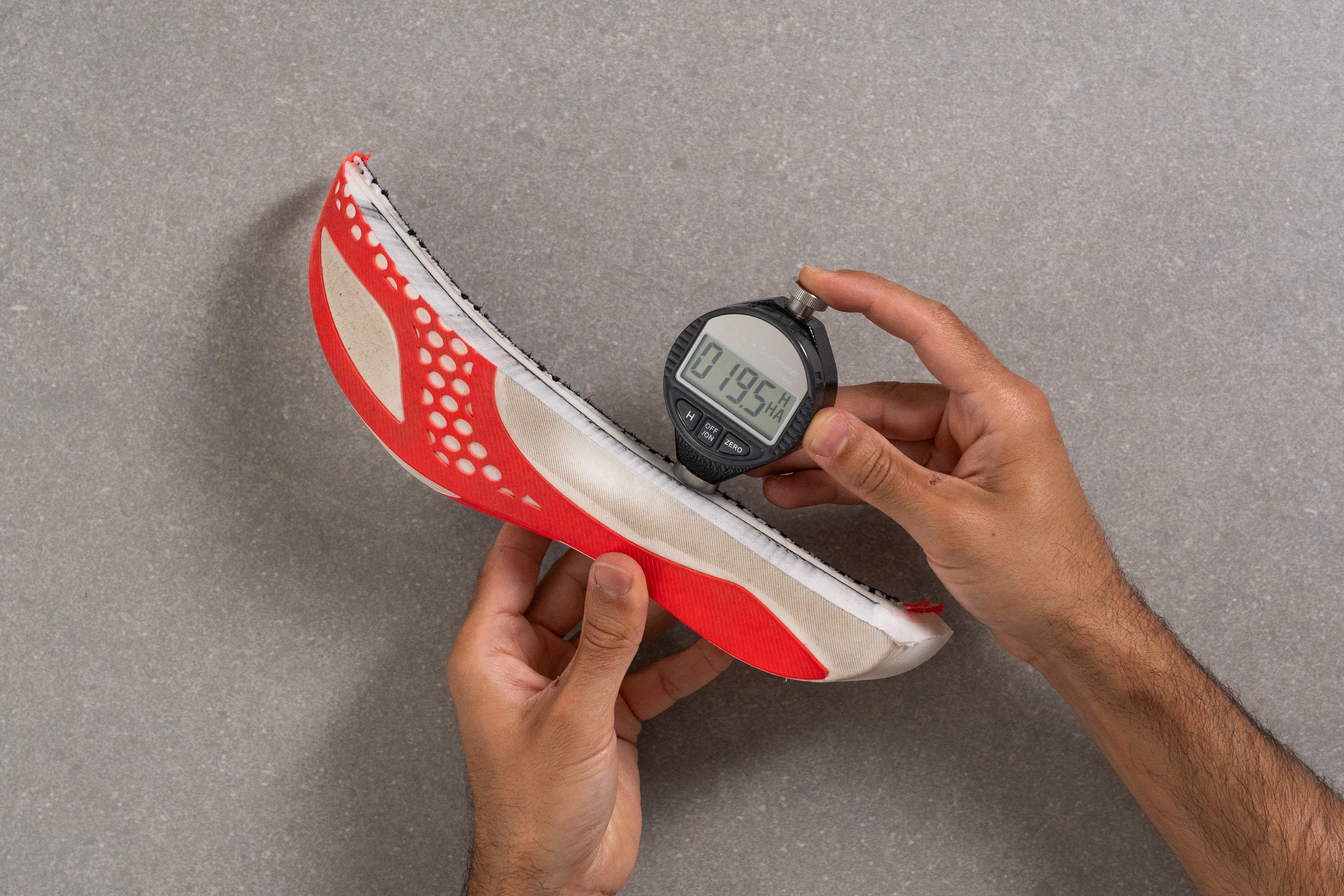
| Metaspeed Sky Tokyo | 19.5 HA |
| Average | 22.7 HA |
Rocker
Looking at the side profile against the rulers, the Metaspeed Sky Tokyo shows a relatively modest rocker compared to other supershoes. The forefoot curvature starts late, creating a more gradual transition that feels smoother but less aggressive than shoes like the Hoka Cielo X1 2.0.
At the heel, the lift is subtle and engages later than in most carbon-plated racers, which often feature a more dramatic bevel. We think that this design clearly favours midfoot and forefoot strikers who want stability and efficiency at marathon pace.
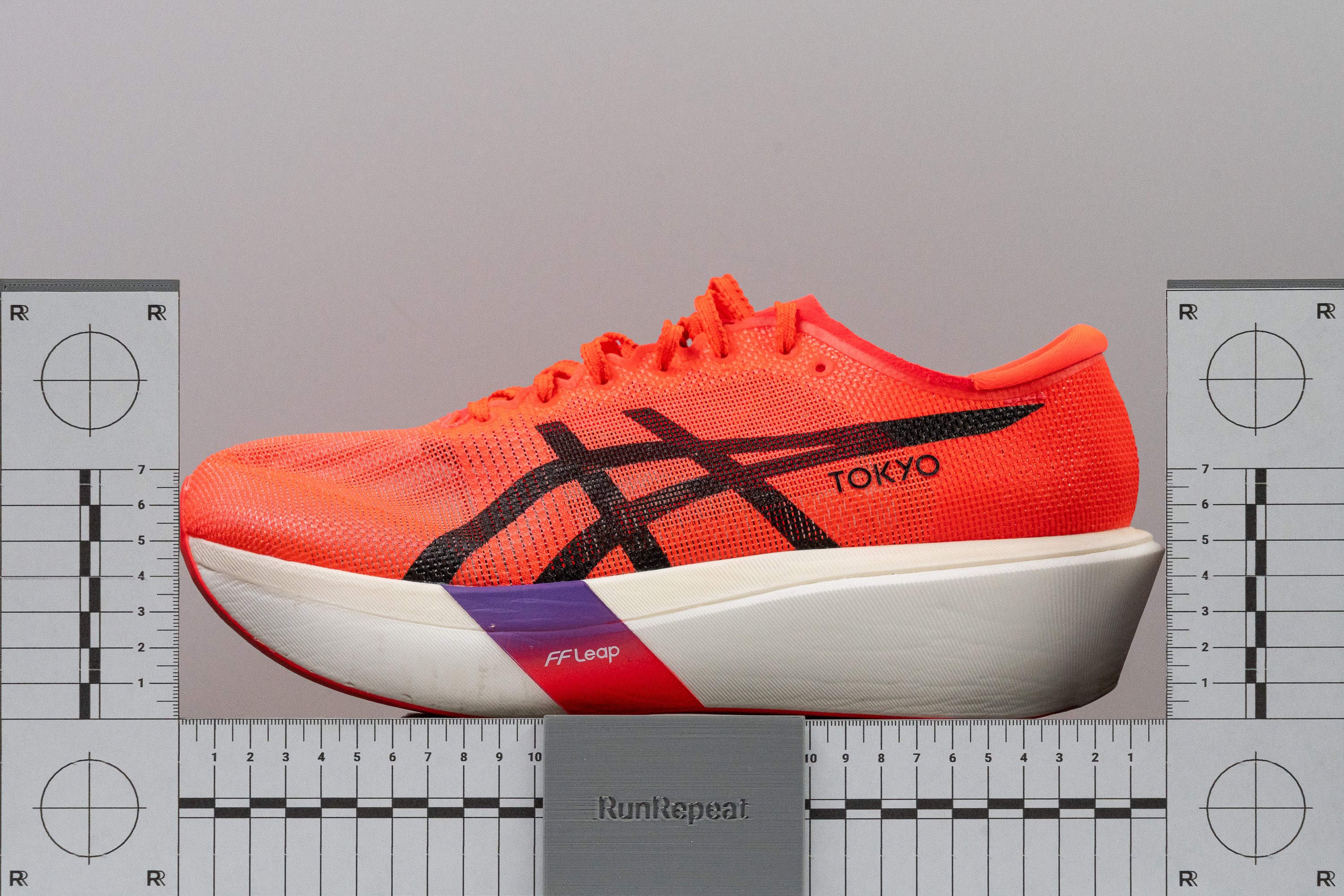
Plate
The plate configuration of the Sky is particularly notable, as it retains its flat shape from previous models and diverges from the spoon-shaped plates that the Vaporfly popularised nearly a decade ago.
This setup is designed to create a more stable forefoot platform, especially beneficial at marathon pace when efficiency matters most. A flat plate also helps distribute forces evenly across the foot and pairs effectively with the tall forefoot stack, making it a superior choice for midfoot and forefoot strikers with powerful, long strides and lower cadence.
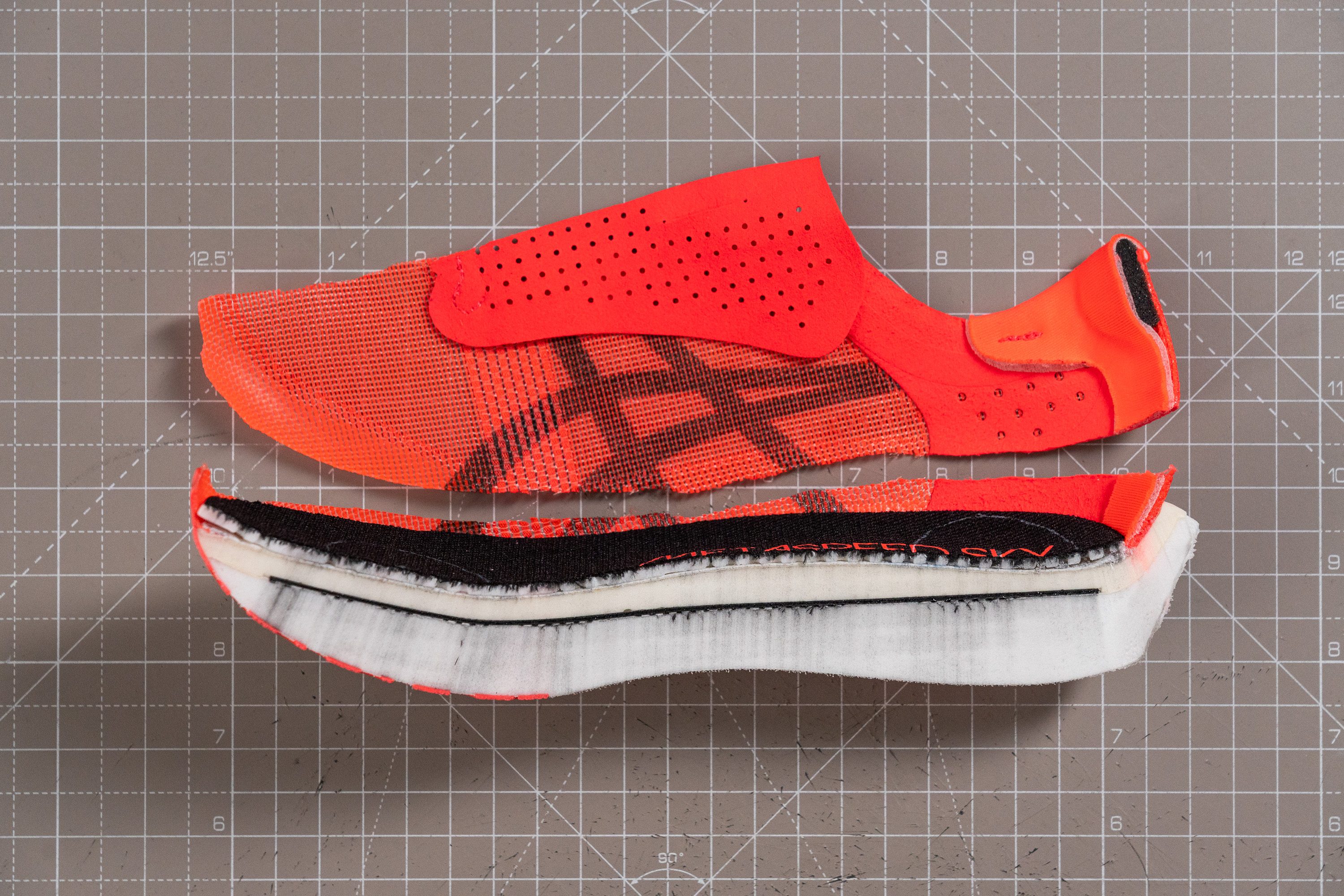
Sky vs. Edge
When ASICS first introduced the Sky and Edge versions, it felt like a refreshing approach to supershoes, giving runners a choice tailored to their running style. However, it quickly became confusing, as many of us wondered... “which one is the good one this time?” since preference shifted between the Sky and Edge depending on the generation.
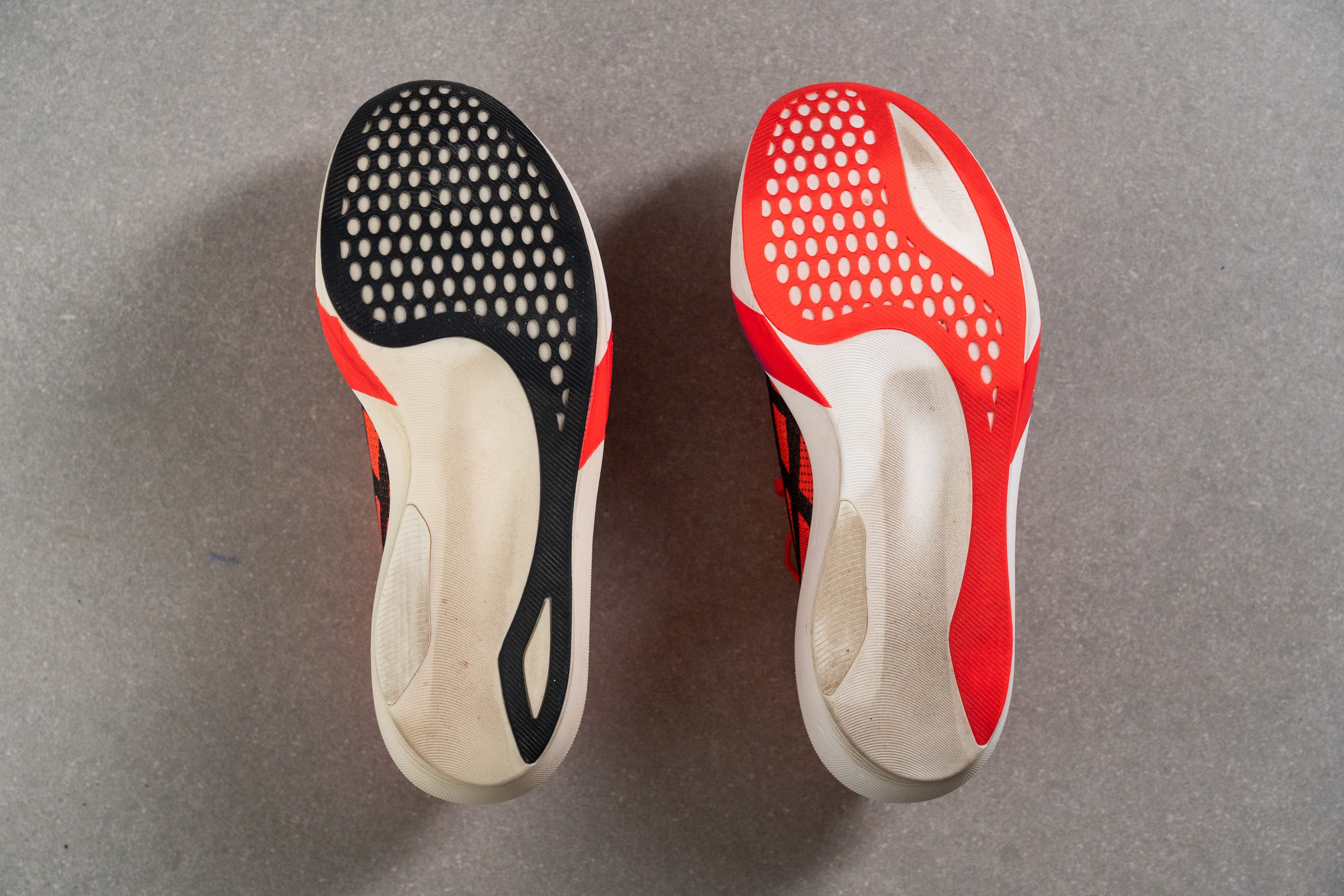
ASICS often favoured the Sky over the Edge, especially in the first two generations when the Edge was much harder to find in stock. Now that has changed, and both models receive equal production attention. They’ve also continued the trend from last year, with the Sky carrying a red outsole and the Edge a black one, and now the FF Leap and FF Turbo+ foams are inverted between the two shoes, which is particularly interesting. Take a look at the video below!
So, which one should you choose? ASICS suggests the Sky is better for "stride" runners, while the Edge suits "cadence" runners. While that’s useful guidance, we think runners who enjoy a rolling forefoot sensation—similar to the Vaporfly 4—should pick the Edge, thanks to its curved plate, which also benefits heel strikers. In contrast, midfoot and forefoot strikers who prefer to lock into a steady rhythm will love the Sky, as it feels like a set-and-forget kind of shoe.
Size and fit
Size
ASICS Metaspeed Sky Tokyo fits true to size (39 votes).
Width / Fit
When we tried the Metaspeed Sky Tokyo for the first time, we immediately noticed a snugger fit compared to its predecessor, which isn’t great news for runners with wide feet.
After crafting a 1:1 mould of the interior, we measured just 90.5 mm in width. It’s clear that ASICS aimed to save weight in every possible area, and narrowing the MOTIONWRAP 3.0 upper helps achieve that—at the expense of comfort.
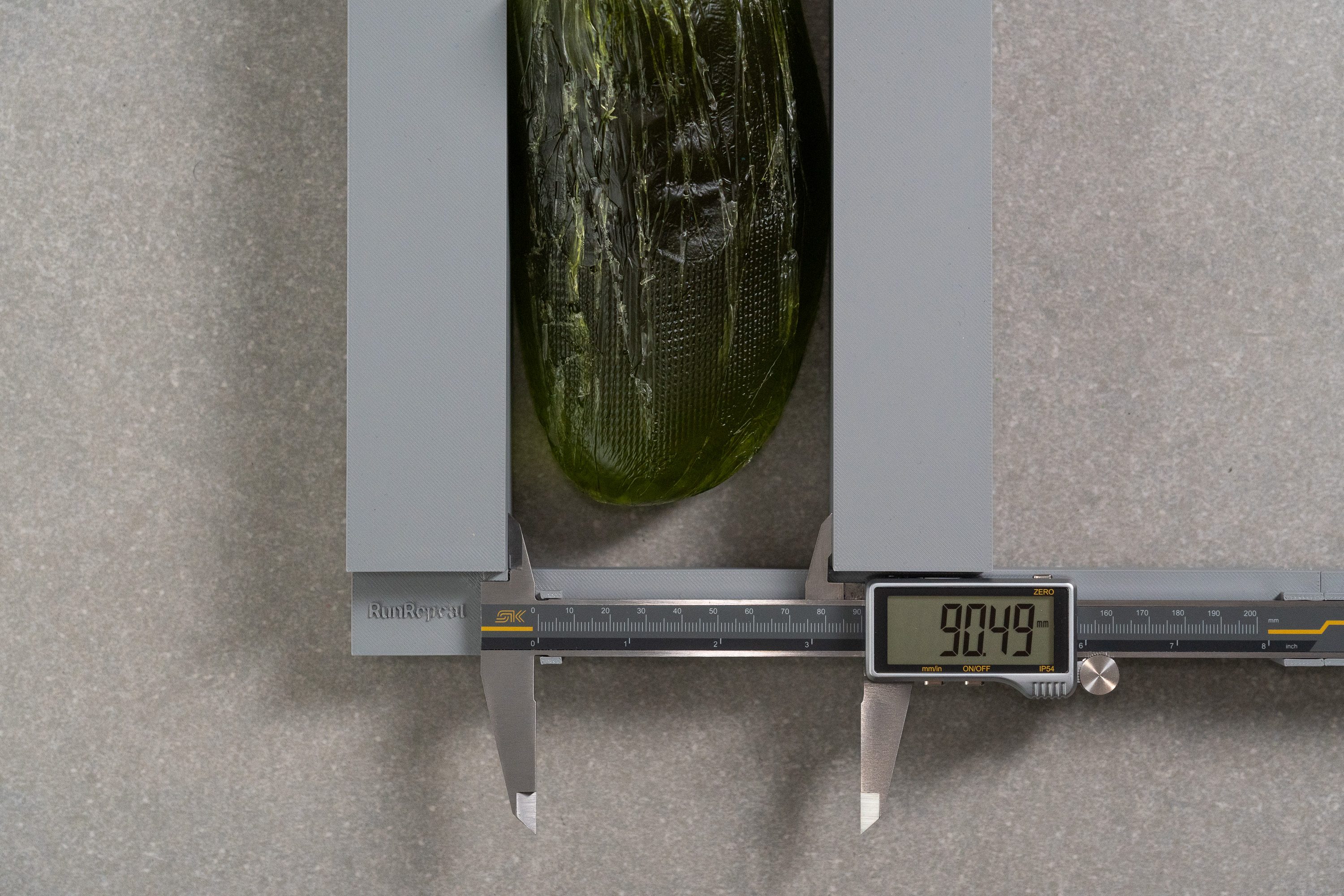
| Metaspeed Sky Tokyo | 90.5 mm |
| Average | 95.1 mm |
Toebox width
As expected, the trend from our first measurement carries over to the toebox width. At just 70.1 mm, space for toe splay is very limited, and runners prone to numbness or tingling should think carefully before tackling a full marathon in these. For a 5K or 10K it should be fine, though.
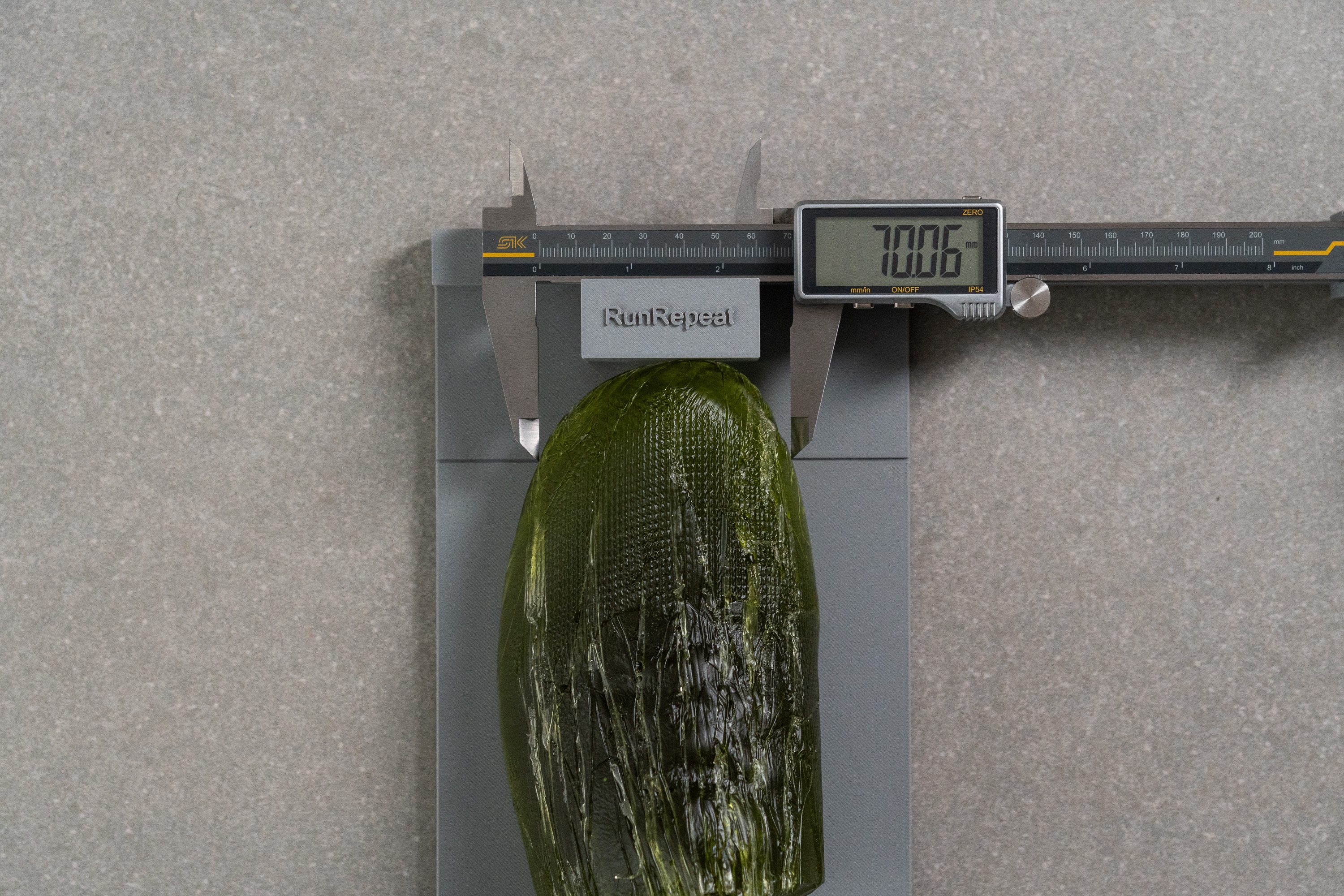
| Metaspeed Sky Tokyo | 70.1 mm |
| Average | 73.2 mm |
Toebox height
Unlike the previous two measurements, the toebox height is quite generous at 30.6 mm.
This is welcome news for runners who often struggle with shoes that put uncomfortable pressure on the big toe nail.
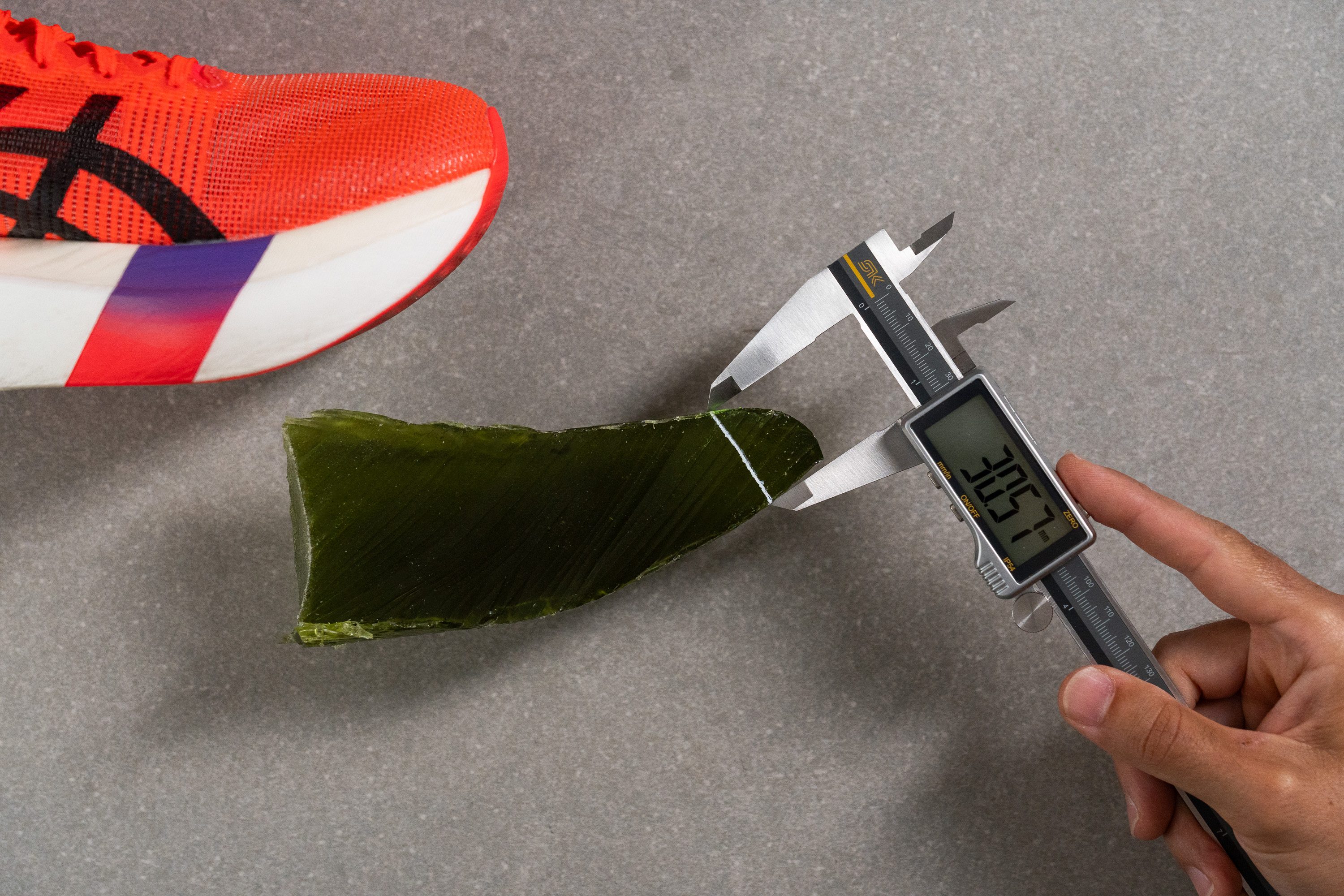
| Metaspeed Sky Tokyo | 30.6 mm |
| Average | 27.1 mm |
Traction / Grip
Traction test
While some brands have shown little progress in outsole design, ASICS has made impressive strides in recent years. The Superblast 2 (0.83), for example, was a huge leap forward in traction compared to the original Superblast (0.33), and the Metaspeed series continues that momentum.
In the Metaspeed Sky Tokyo, ASICS retained their ASICSGRIP compound, which provides outstanding grip across all weather conditions encountered in road racing. Few shoes manage to reach a remarkable 0.66 score in our test, making this supershoe one of the most impressive we’ve measured.
| Metaspeed Sky Tokyo | 0.66 |
| Average | 0.48 |
Outsole design
The outsole of the Metaspeed Sky Tokyo features only ASICSGRIP rubber. The forefoot showcases oval cutouts in a grid layout that reduce material and save weight, while the midfoot and much of the heel remain mostly foam-exposed. A larger lateral forefoot cutout compared with the Edge stands out, as that model includes full rubber coverage in the same zone as we proved before.
This design continues ASICS’ performance-focused philosophy for this series, carrying over the exact outsole structure from earlier Metaspeeds and maintaining a proven layout without introducing unnecessary changes.
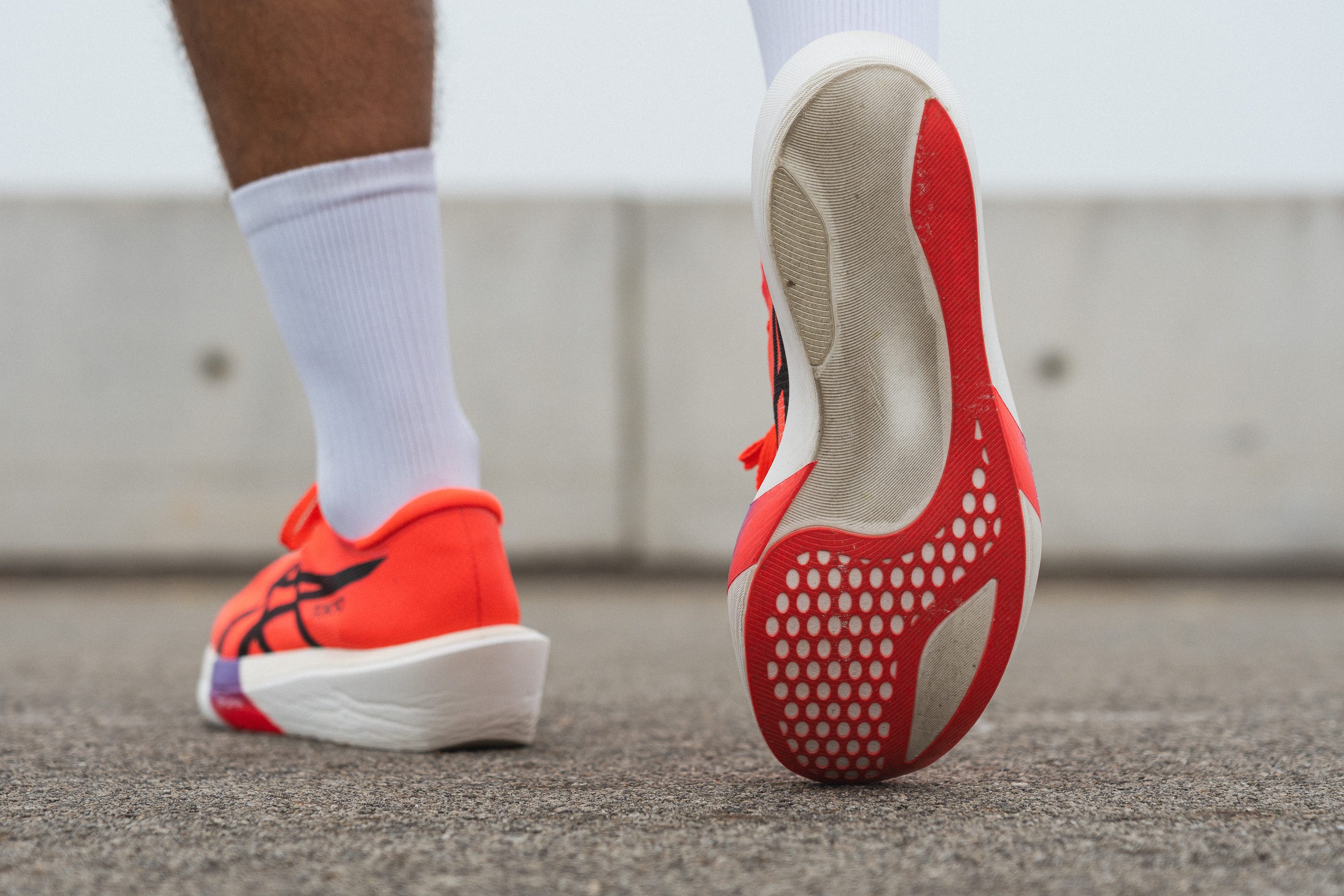
Flexibility / Stiffness
The Sky Tokyo features a full-length carbon plate with a flat profile, boosting stiffness by eliminating a defined bending point. In our 30-degree bend test, it required 21.1N—about 33% more than the Edge Tokyo.
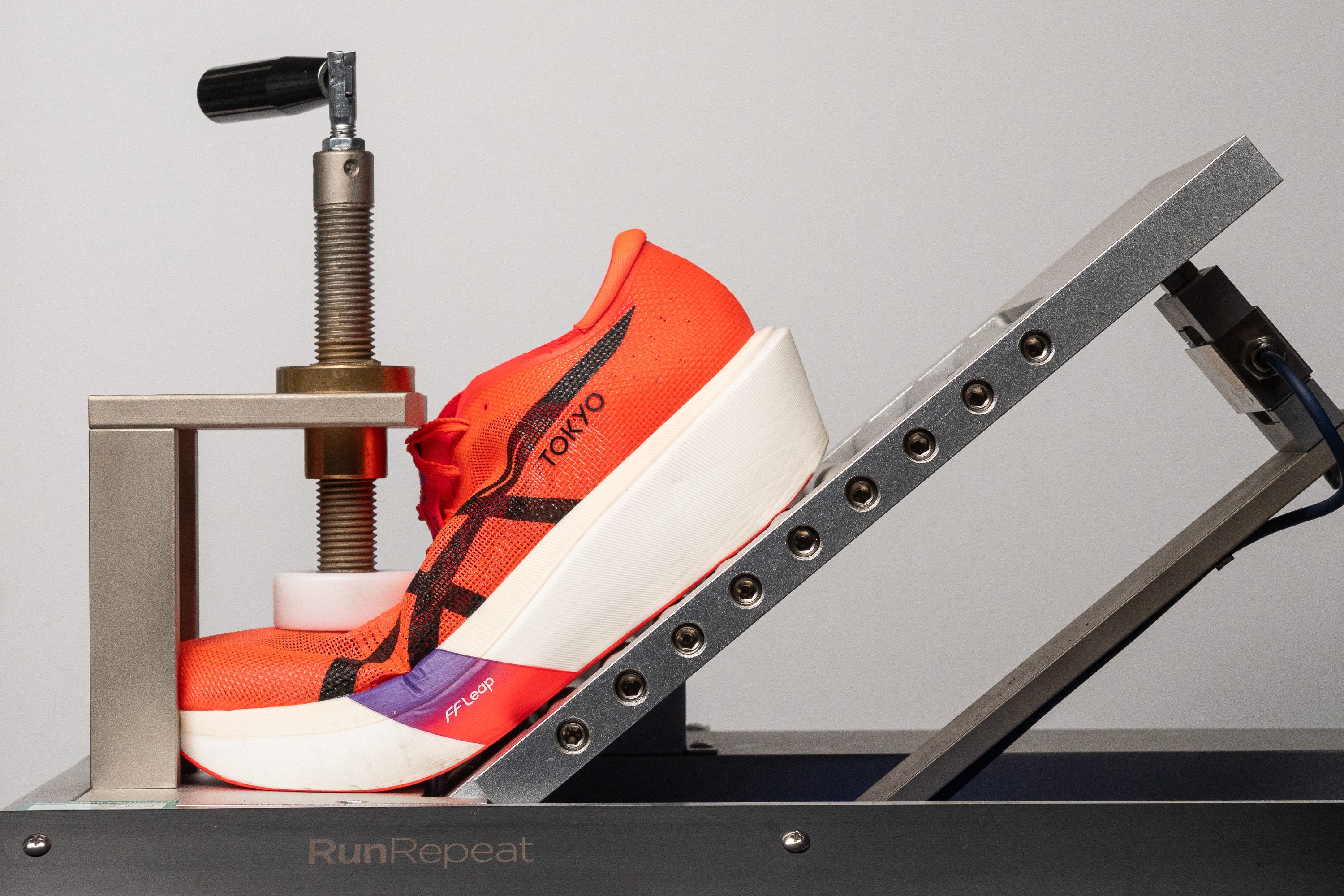
| Metaspeed Sky Tokyo | 21.1N |
| Average | 15.3N |
Weight
The Sky Paris really raised the bar with 6.5 oz (183g), beating most supershoes with ease. We tested it and felt it was already world-class in terms of weight, yet ASICS went further in a true kaizen spirit.
The ASICS Metaspeed Sky Tokyo achieves an ultra-light 5.7 oz (163g), a fantastic improvement over its predecessor. In our experience, it's an almost invisible supershoe that disappears underfoot!
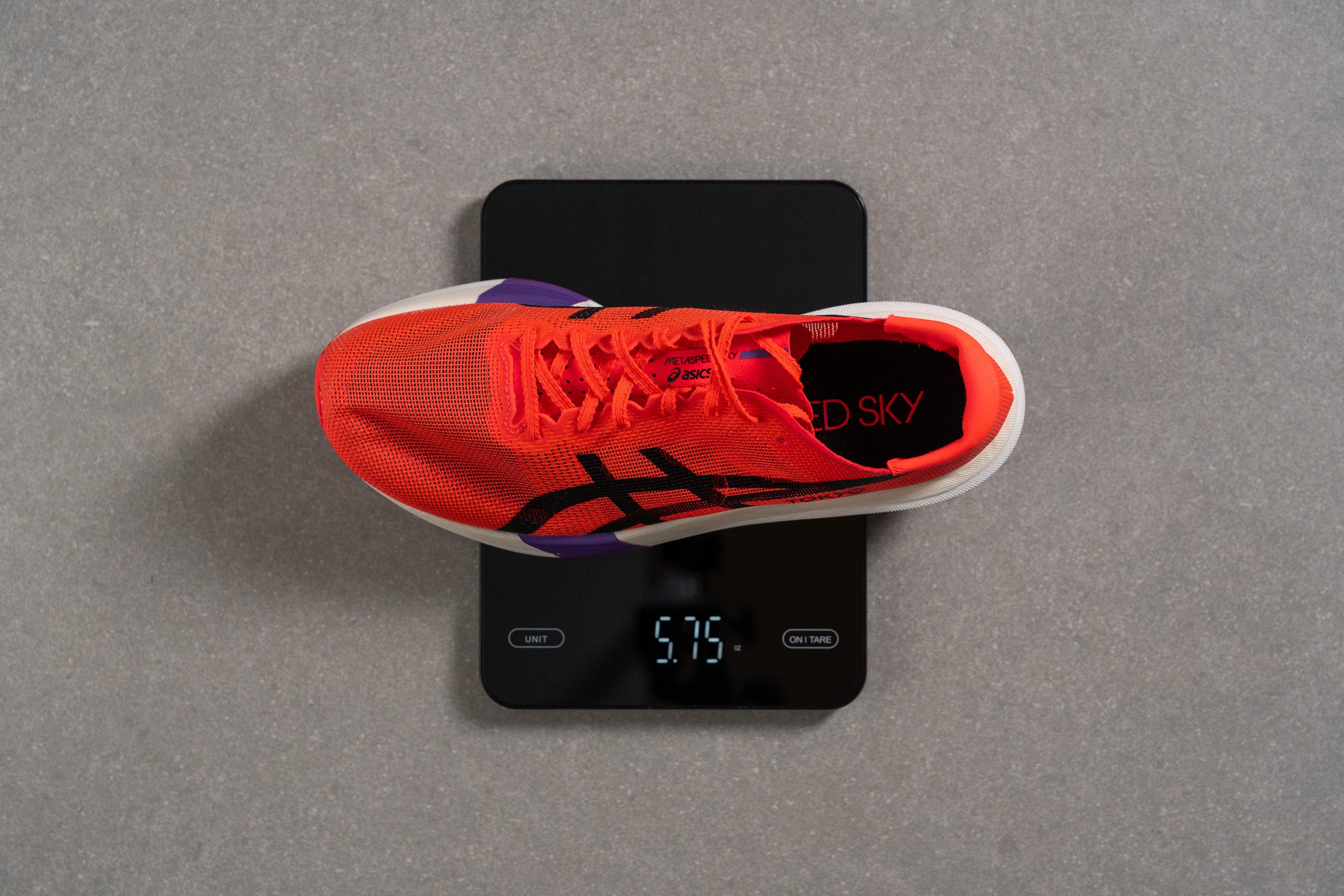
| Metaspeed Sky Tokyo | 5.7 oz (163g) |
| Average | 9.3 oz (264g) |
Breathability
We found more kaizen upgrades in the upper. The MOTIONWRAP 3.0 is a clear step forward from version 2.0, cutting weight while improving ventilation, which was already excellent in the previous generation.
In our smoke test, the Sky Tokyo performed phenomenally, securing a perfect 5/5 score. We think this is the benchmark every supershoe should target, as racing all-out generates extreme heat across the entire foot.
The upper is incredibly thin and highly ventilated, with ASICS adding perforations throughout, even in the heel, to ensure airflow from every angle.
They also went next-level with the insole, reducing weight while making it airflow-ready.
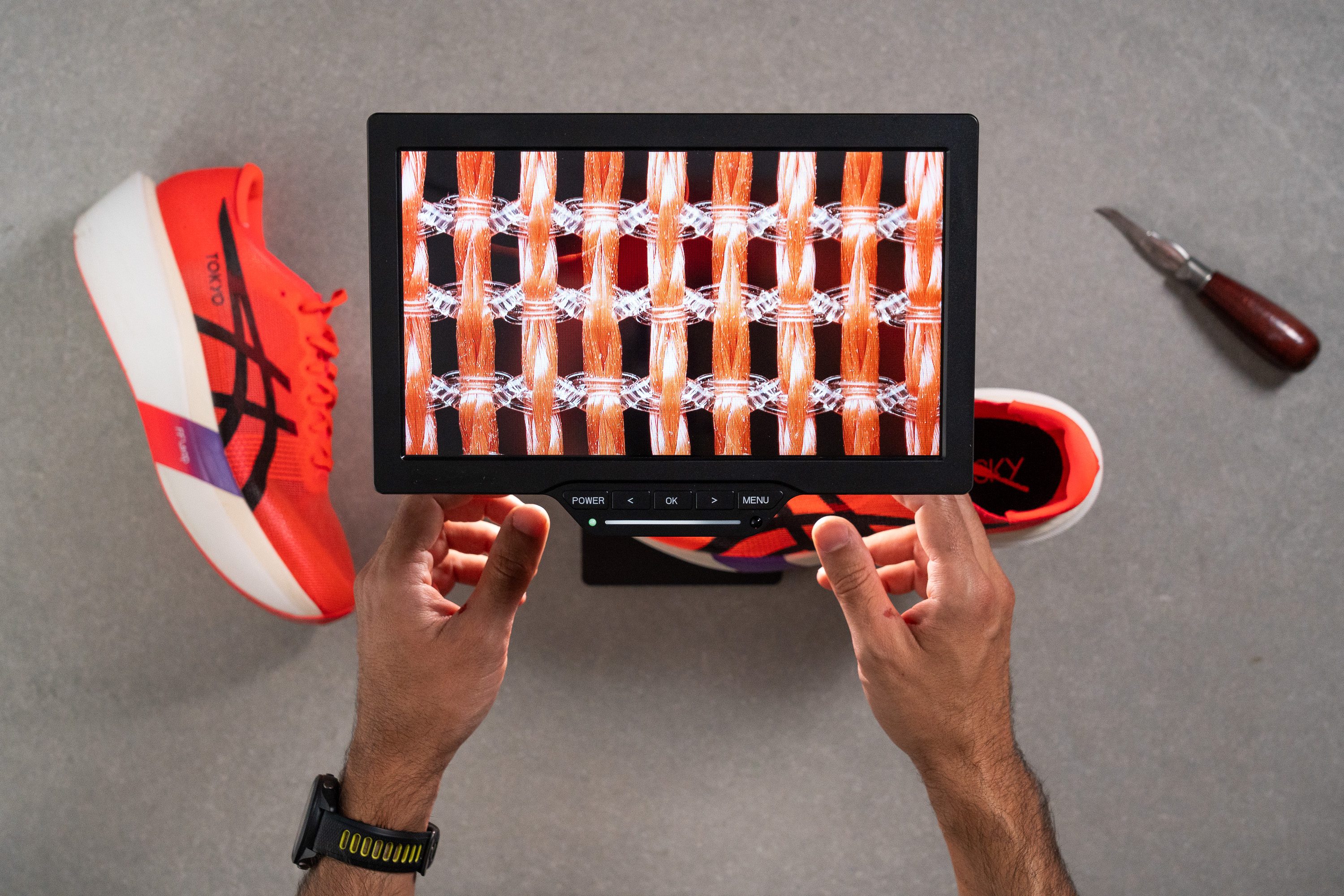
Under our digital microscope, the upper looked outstanding, showing uniform gaps for ventilation while retaining strength. The upper reflects the premium standards we expect from a premium-priced supershoe, with impressive attention to detail.
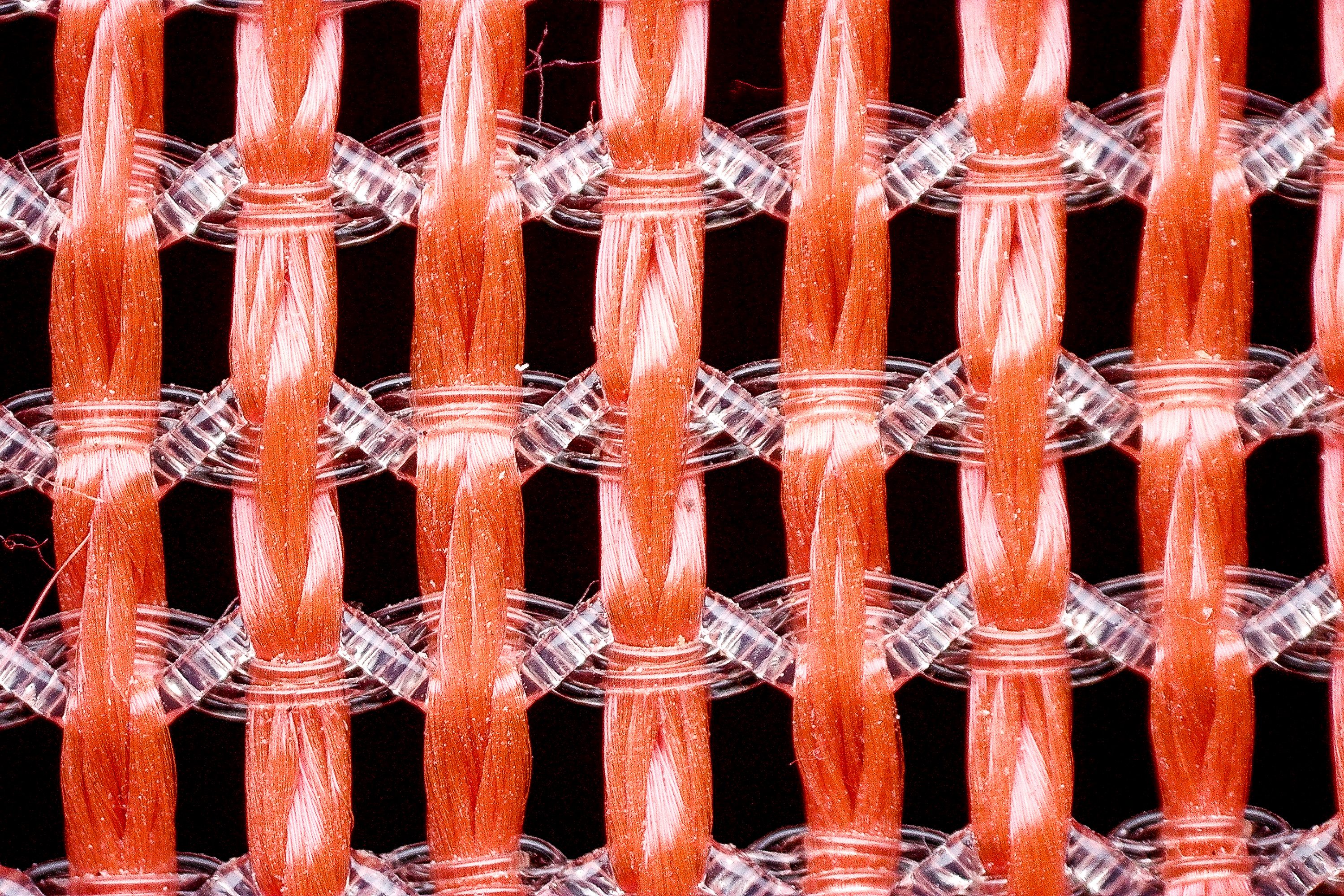
Comfort is not its strongest suit, yet ASICS added foam in the heel, providing cushioning that far surpasses most competitors in this racing category, all while keeping the overall weight impressively low.
| Metaspeed Sky Tokyo | 5 |
| Average | 3.7 |
Stability
Lateral stability test
If you’re searching for a stable supershoe, the Metaspeed Sky Tokyo isn’t the one. The heel platform is narrow, and the soft foam makes it especially unstable even despite the flared design, so our recommendation is pretty clear: this shoe works best for midfoot and forefoot strikers, and heel strikers should go for the Edge.
The upside of this instability is pure fun, with the ride feeling like an elastic bed where you can clearly sense the shoe delivering a remarkably high level of energy back to you.
Torsional rigidity
The flat carbon plate in the Sky Tokyo makes the shoe ultra-stiff, and it was no surprise that it earned a 5 out of 5 in our stiffness test.
| Metaspeed Sky Tokyo | 5 |
| Average | 3.5 |
Heel counter stiffness
Supershoe design often favours a flexible heel counter, and ASICS followed that approach here. As a result, the shoe provides virtually no support in this area and we rated it at 1/5, leaving the workload entirely to your tendons and muscles.
| Metaspeed Sky Tokyo | 1 |
| Average | 2.9 |
Midsole width - forefoot
The forefoot appears quite wide, but at 114.9 mm it’s actually close to the average running shoe. However, because the toebox is narrow and squeezes the foot, the shoe feels wider in motion than the measurement suggests.
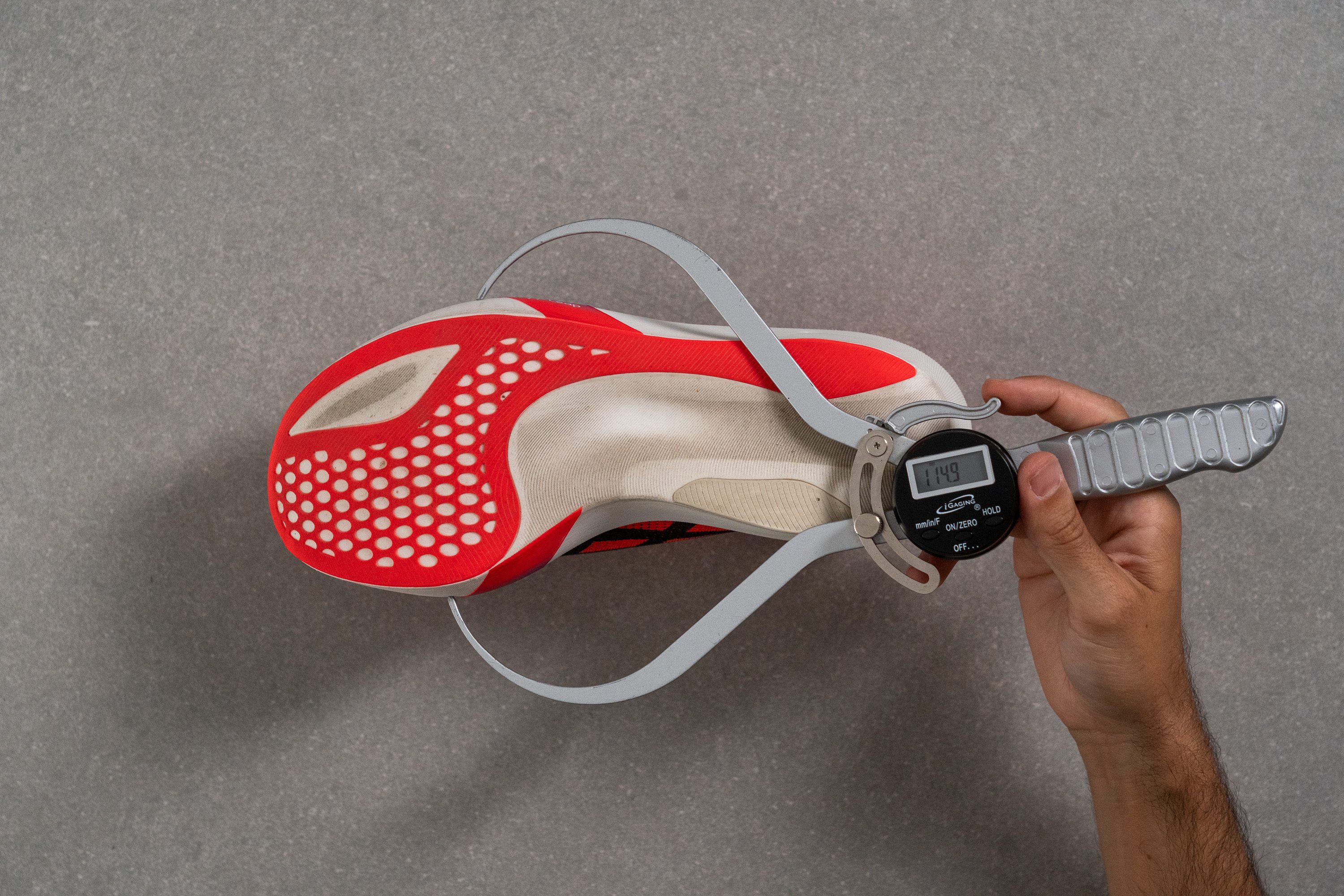
| Metaspeed Sky Tokyo | 114.9 mm |
| Average | 114.4 mm |
Midsole width - heel
Previous Metaspeeds featured extremely narrow heel designs, and ASICS continues the trend, pushing it further with just 75.0 mm. This is among the lowest measurements we’ve ever recorded in the lab and highlights why heel strikers should avoid this model.
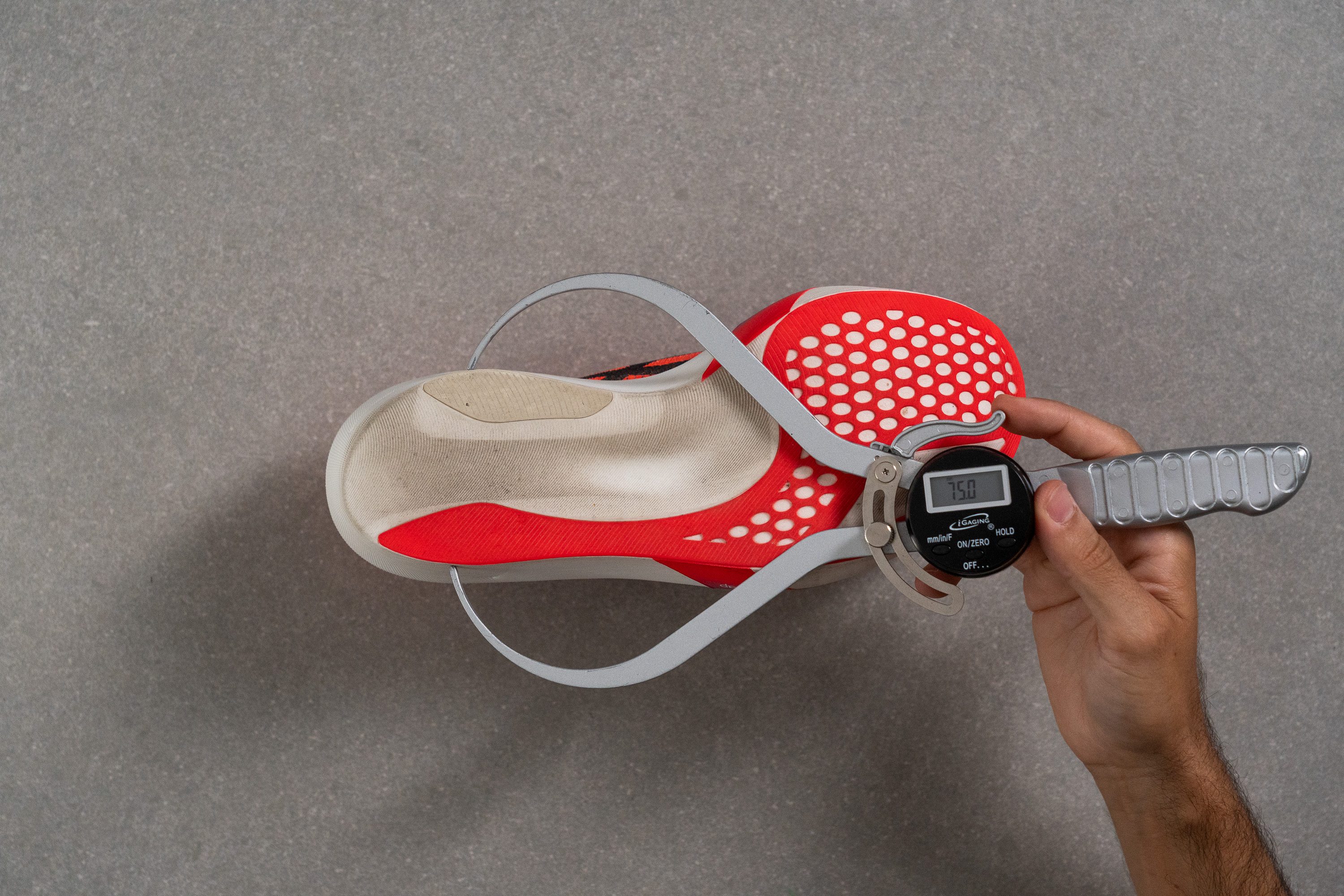
| Metaspeed Sky Tokyo | 75.0 mm |
| Average | 90.7 mm |
Durability
Toebox durability
Our expectations were low for this test, given how unbelievably thin the upper is, and we were prepared for a 1/5 score. Sure enough, that’s exactly what we confirmed after examining the tool’s damage.
| Metaspeed Sky Tokyo | 1 |
| Average | 2.6 |
Heel padding durability
To balance things out, ASICS added a highly durable heel lining that scored a flawless 5/5. This was an unexpected result and exactly the kind of pleasant surprise we enjoy discovering.
| Metaspeed Sky Tokyo | 5 |
| Average | 3.4 |
Outsole durability
The ASICSGRIP outsole is soft and sticky, so it’s no surprise that durability fell below the lab average with 1.4 mm of wear.
While not ideal, this shoe isn’t built for endless miles and it's not a rugged daily trainer. It’s built to race and grip hard through corners, making the trade-off understandable.
| Metaspeed Sky Tokyo | 1.4 mm |
| Average | 1.1 mm |
Outsole thickness
The outsole thickness is just 1.4 mm, so as we mentioned earlier, don’t expect it to last forever.
That said, durability always varies widely, as it's influenced by multiple factors beyond terrain or footstrike—such as runner weight, pace, weather conditions, and training/racing frequency.
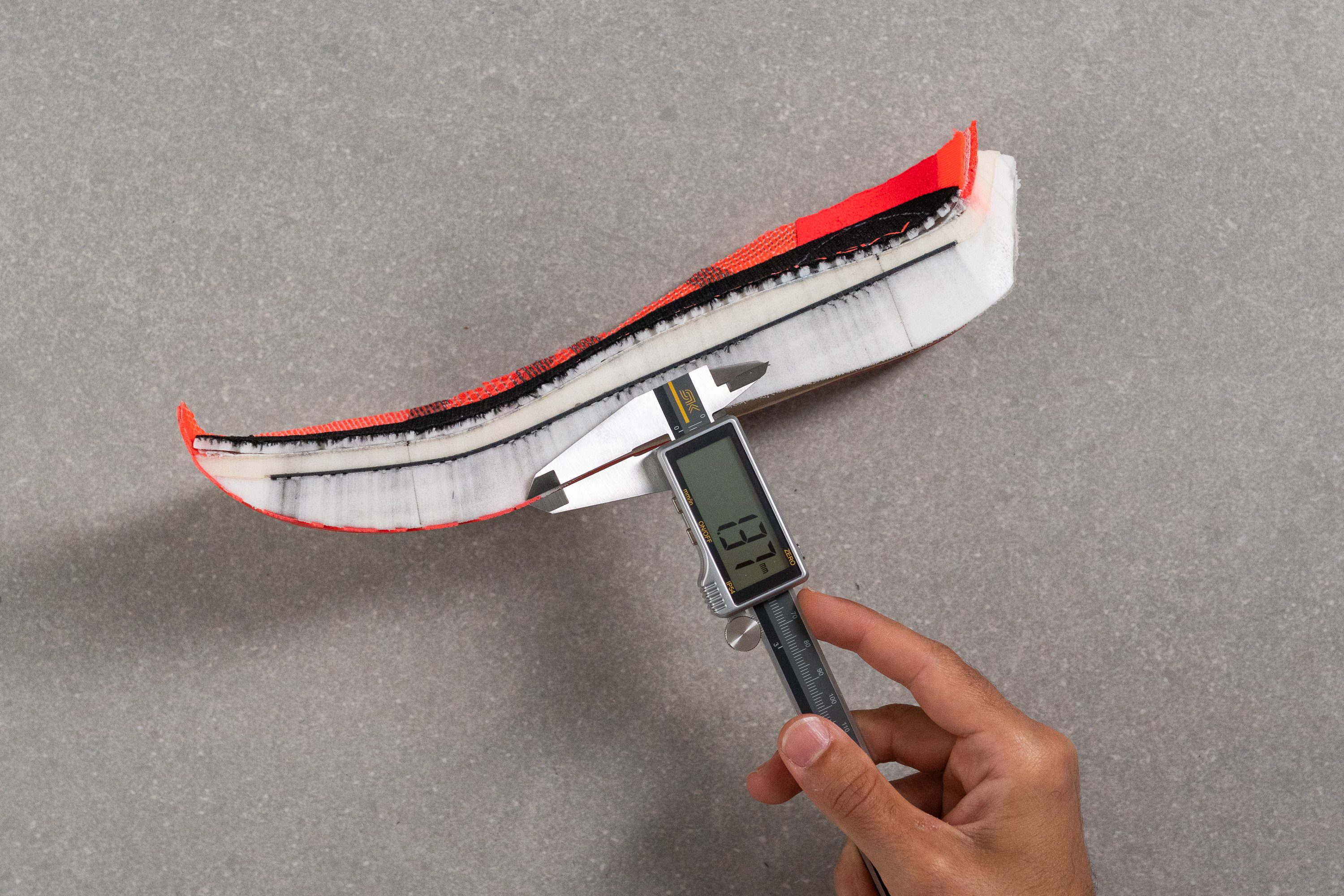
| Metaspeed Sky Tokyo | 1.4 mm |
| Average | 3.2 mm |
Misc
Insole thickness
The insole matches the racing nature of the shoe, featuring a slim thickness of just 3.1 mm.
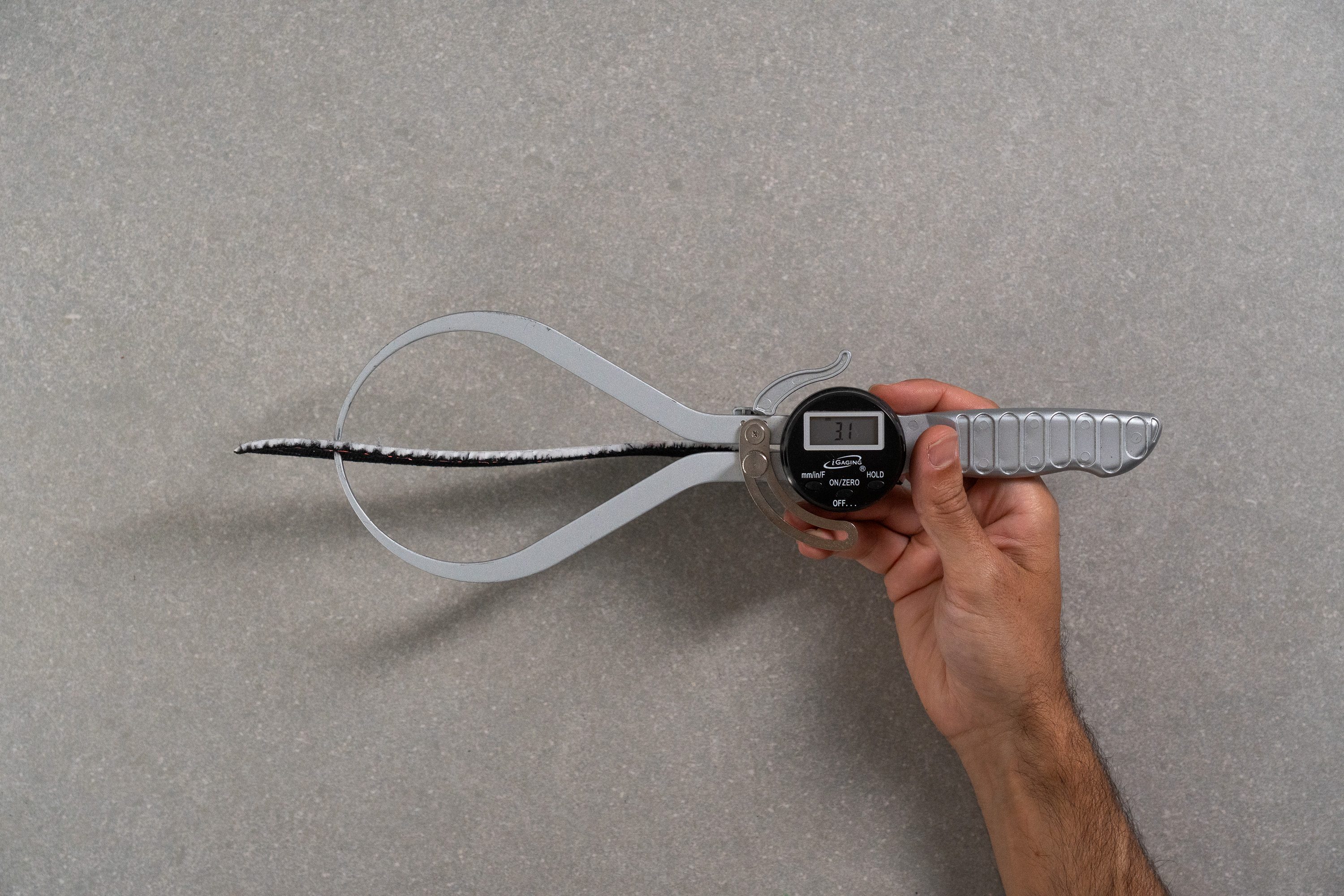
| Metaspeed Sky Tokyo | 3.1 mm |
| Average | 4.5 mm |
Removable insole
The insole is fully removable, which isn’t always the case with supershoes. It offers ventilation and a slim profile that matches the shoe perfectly. Replacing it with a thicker option would make the toebox feel extremely cramped too.
On the other hand, runners who need extra room in the toebox can remove the insole and run without it. The cushioning loss is minimal, and the shoe becomes even lighter in the process.
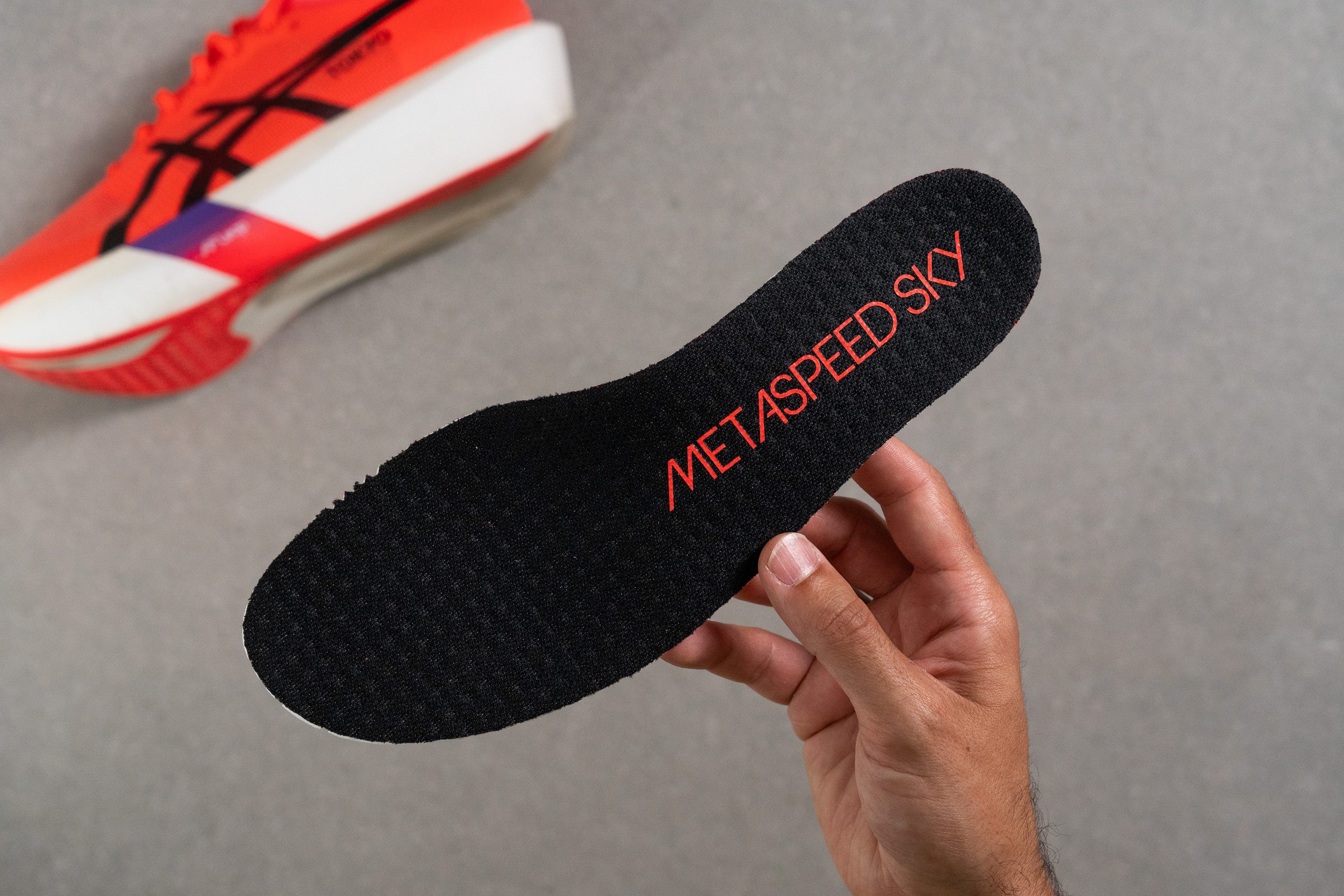
| Metaspeed Sky Tokyo | Yes |
Midsole softness in cold (%)
One of the best aspects of premium foams like A-TPU is that, unlike EVA, they don’t become excessively firm in cold temperatures. In fact, we measured only a modest 13% increase.
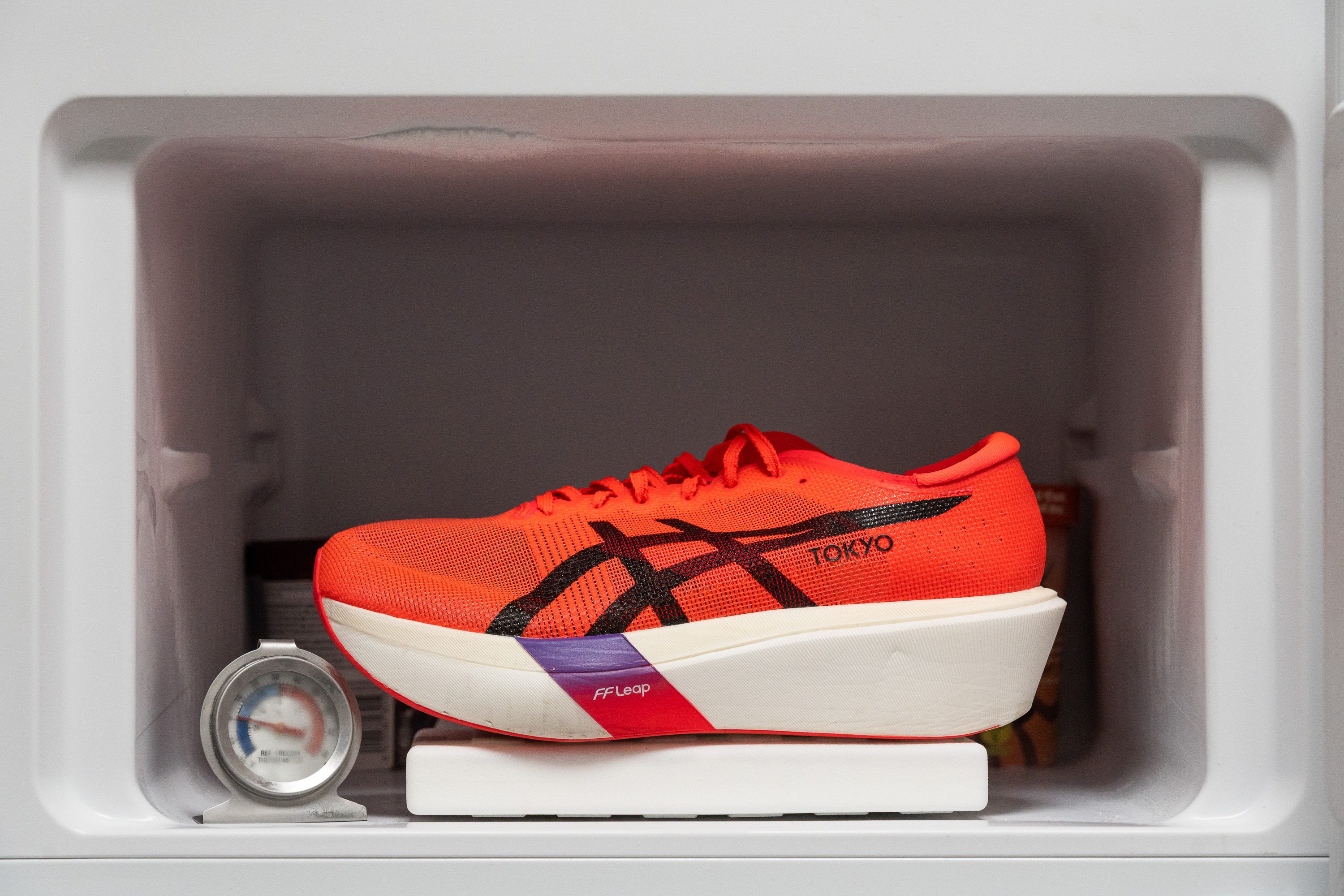
| Metaspeed Sky Tokyo | 13% |
| Average | 24% |
Reflective elements
We didn’t expect to see reflective elements on the Sky Tokyo, and after carefully checking, we couldn’t find a single one.
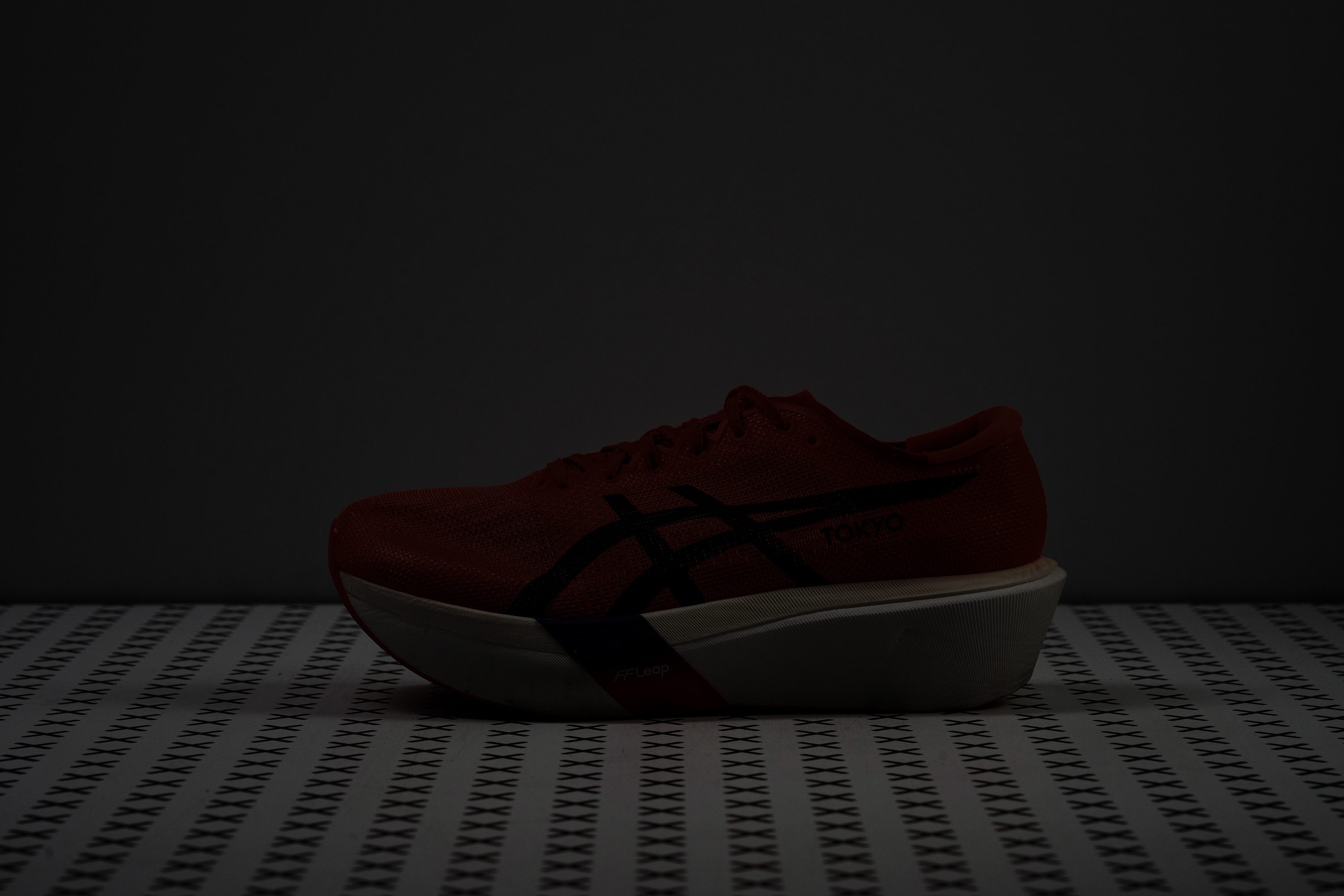
| Metaspeed Sky Tokyo | No |
Tongue padding
ASICS is arguably the brand that's trying to make tongues as thin as possible, pushing the boundaries not only in supershoes but also in training-oriented models like the Nimbus 27. With the Metaspeed Sky Tokyo they really went for the weight savings. In fact, at 0.6 mm, it's one of the thinnest we've ever measured here in the lab.
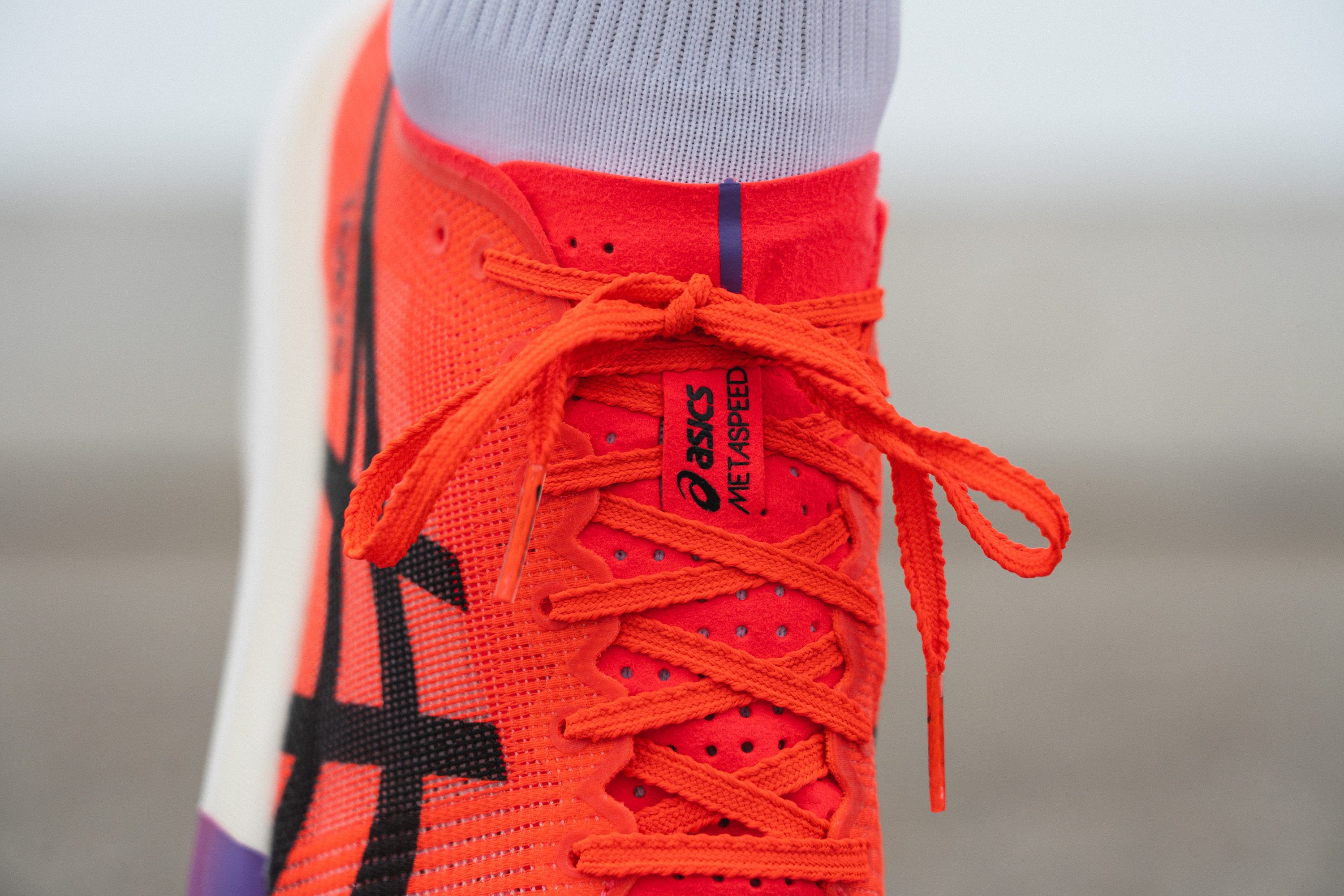
We also discovered that the Metaspeed Sky Tokyo uses a traditional lacing system with evenly spaced eyelets. The laces feel premium and are slightly textured, which helps them stay securely tied. We also liked that the central alignment of the lace holes ensures a balanced lockdown, while the lace length allows for various tying techniques, including marathon-style double knots or a heel-lock setup.
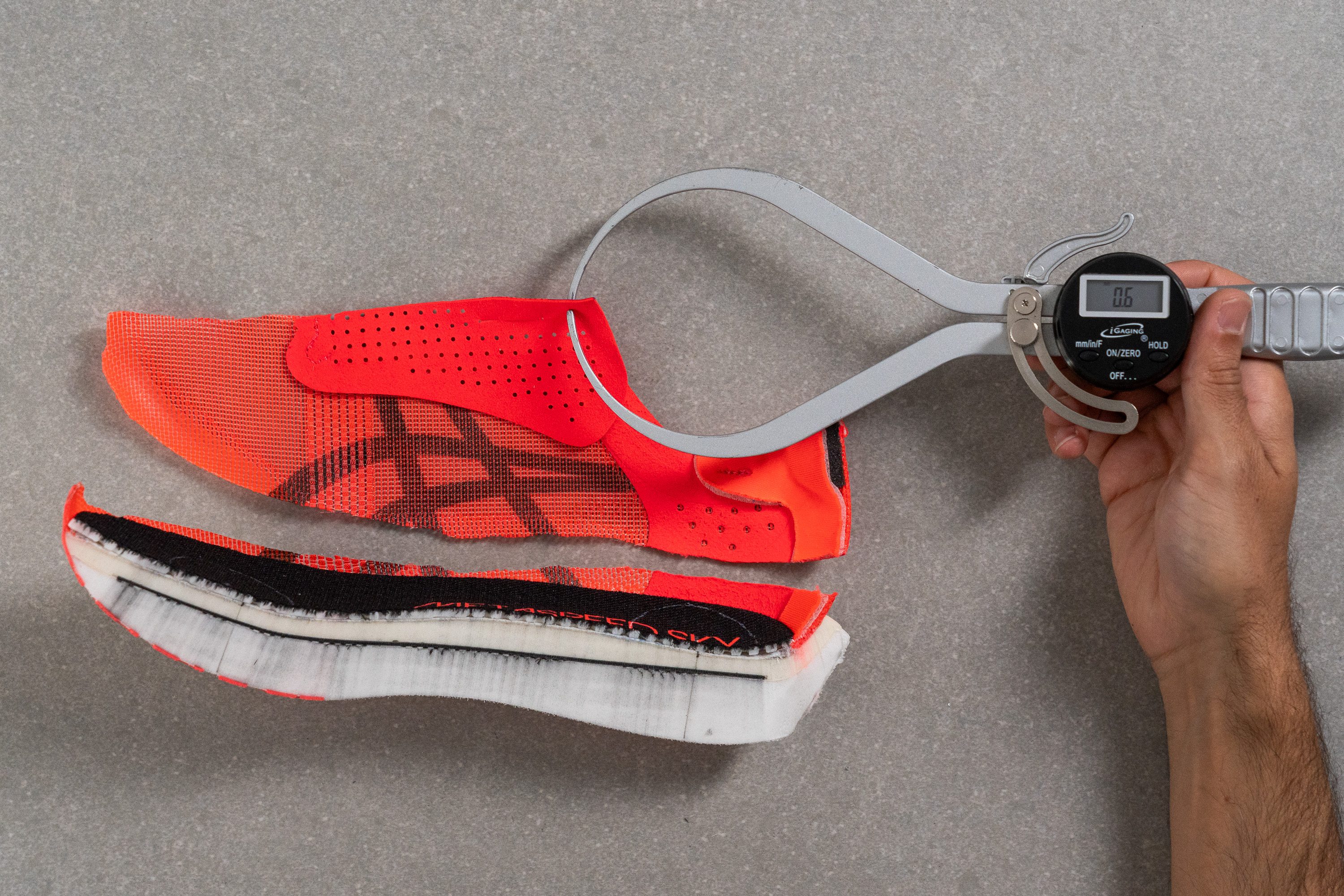
| Metaspeed Sky Tokyo | 0.6 mm |
| Average | 5.8 mm |
Tongue: gusset type
The tongue isn’t attached to the sides. Fortunately, it stays securely in place, but if that’s a deal-breaker for you, consider the On Cloudboom Strike, which features a tongue that’s partially fixed for extra support.
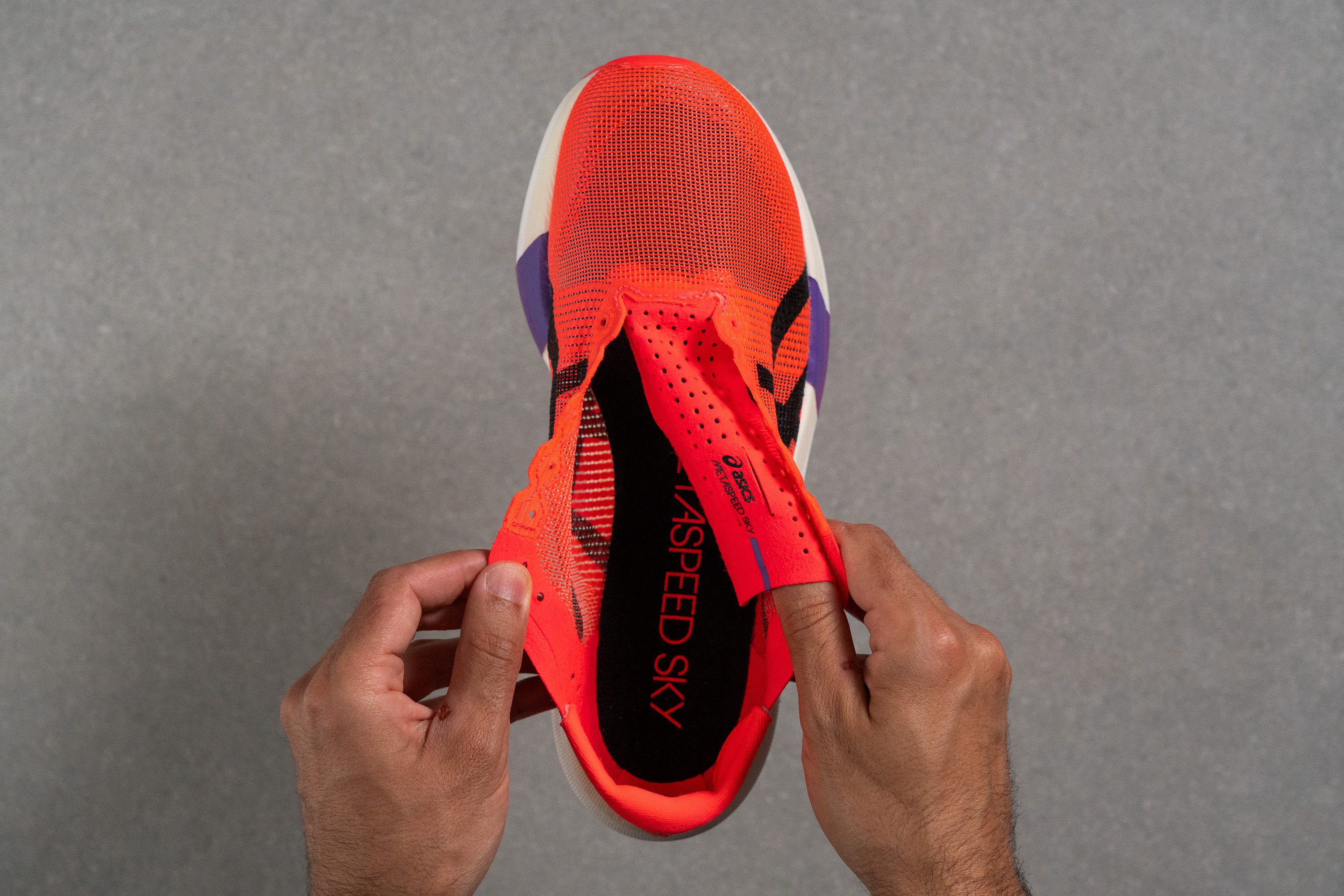
| Metaspeed Sky Tokyo | None |
Price
The Sky Tokyo comes with a 20 dollar/euro price increase over its predecessor, which is never good news for our wallets. We buy every shoe we test, and you buy every pair you run in, so we’re in the same boat here.
That said, we think that the addition of FF Leap to the midsole, the noticeable boost in energy return, and the reduced weight make the extra cost an easy choice to justify.
| Metaspeed Sky Tokyo | $270 |
Heel tab
The heel design is extremely minimalistic, skipping a finger-loop heel tab to reduce weight. This photo also shows how ASICS used the bare minimum of padding in the heel collar to keep things as light as possible.
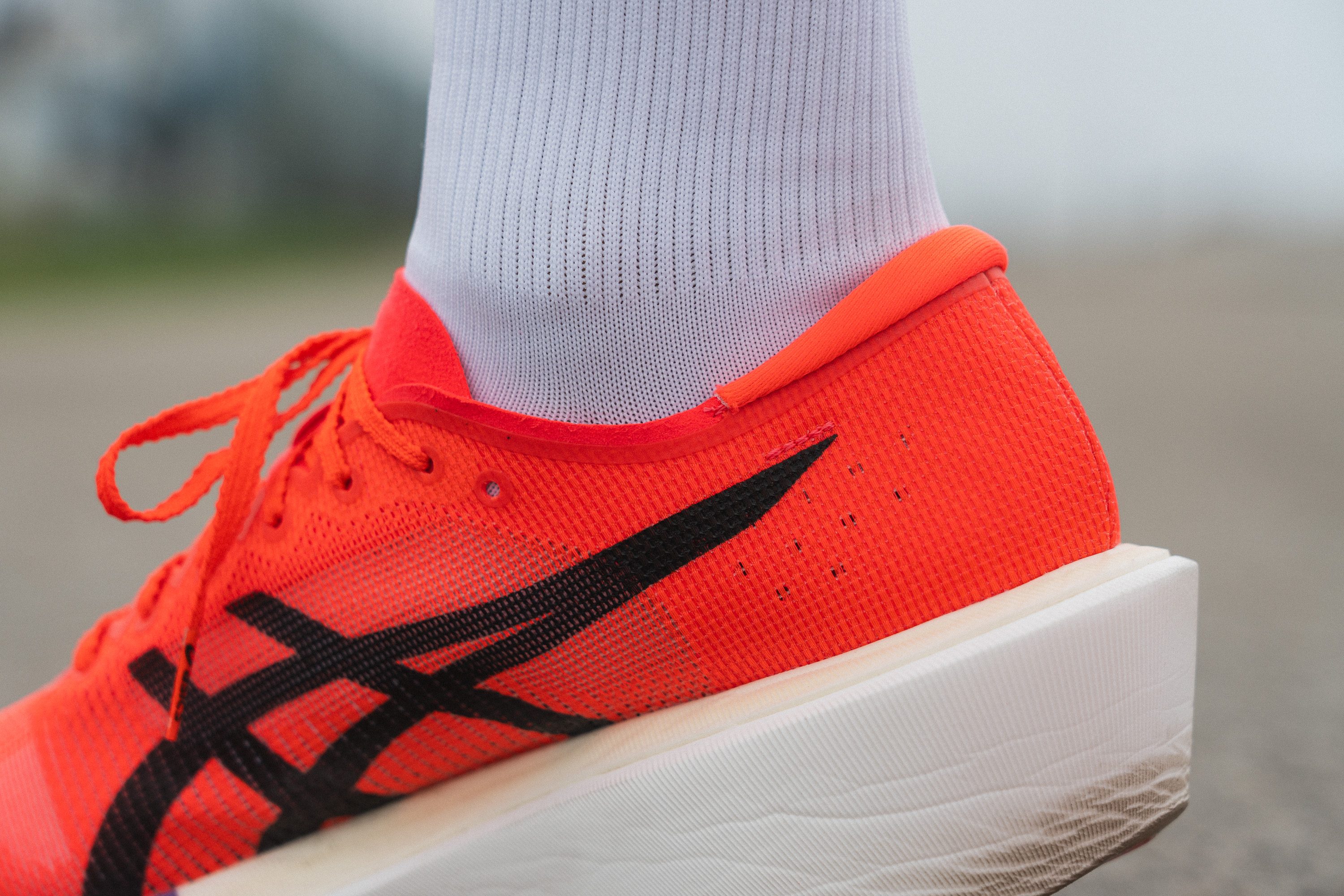
| Metaspeed Sky Tokyo | None |

